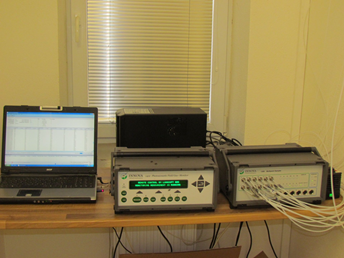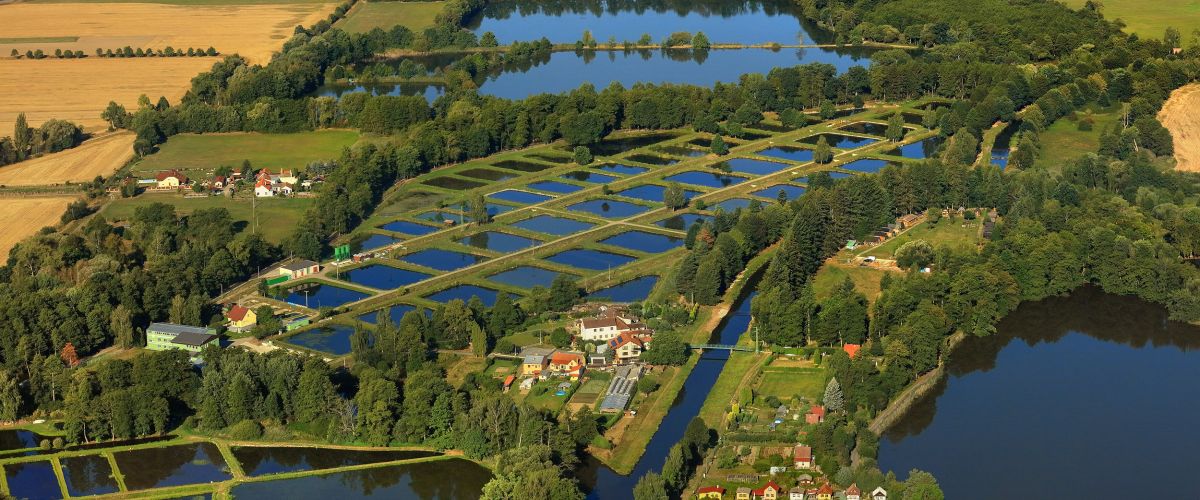
/CENAKVA/
South Bohemian Research Center of Aquaculture and Biodiversity of Hydrocenoses
Large research infrastructure CENAKVA
The aim of the large research infrastructure CENAKVA (LM2018099, LM2023038) is an understanding of changes in freshwater ecosystems and their social importance in terms of biodiversity conservation, protection of the aquatic environment and water resources important for human life and activity. Large research infrastructure CENAKVA covers infrastructure, knowledge and expertise of the Faculty of Fisheries and Protection of Waters a South Bohemian Research Center of Aquaculture and Biodiversity of Hydrocenoses and enables open access to the 25% of the capacity.
Large research infrastructure CENAKVA operates on the principle of open access infrastructure for experimental activities, which includes a total of 12 specific laboratories and research workplaces.
Unique pond, experimental and scientific background together with close ties to the fishing community in the Czech Republic, Europe and the world, which CENAKVA has, creates a unique unit, which is able to plan and verify future proposals for management of ponds, due to climate changes in the Czech Republic and Europe.
Large research infrastructure belongs to the field of environmental sciences Roadmap of the Czech Republic for large infrastructures for research, experimental development and innovation. In the future, the main task of fishermen will not be to produce fish, but to maintain quality water in a quality landscape, creating a regional climate that reduces drought and flooding.
Feel free to sign up with your experiment! The call for projects is open continuously!
The applicant shall complete the Form electronically with a structured curriculum vitae and wait for the project to be evaluated and decide whether the project will be implemented.
Infrastructure and services
| Experimental Fish Culture and Facility | |
| 12 x circle tanks in flow system (1500l) – for experiments in outside conditions | 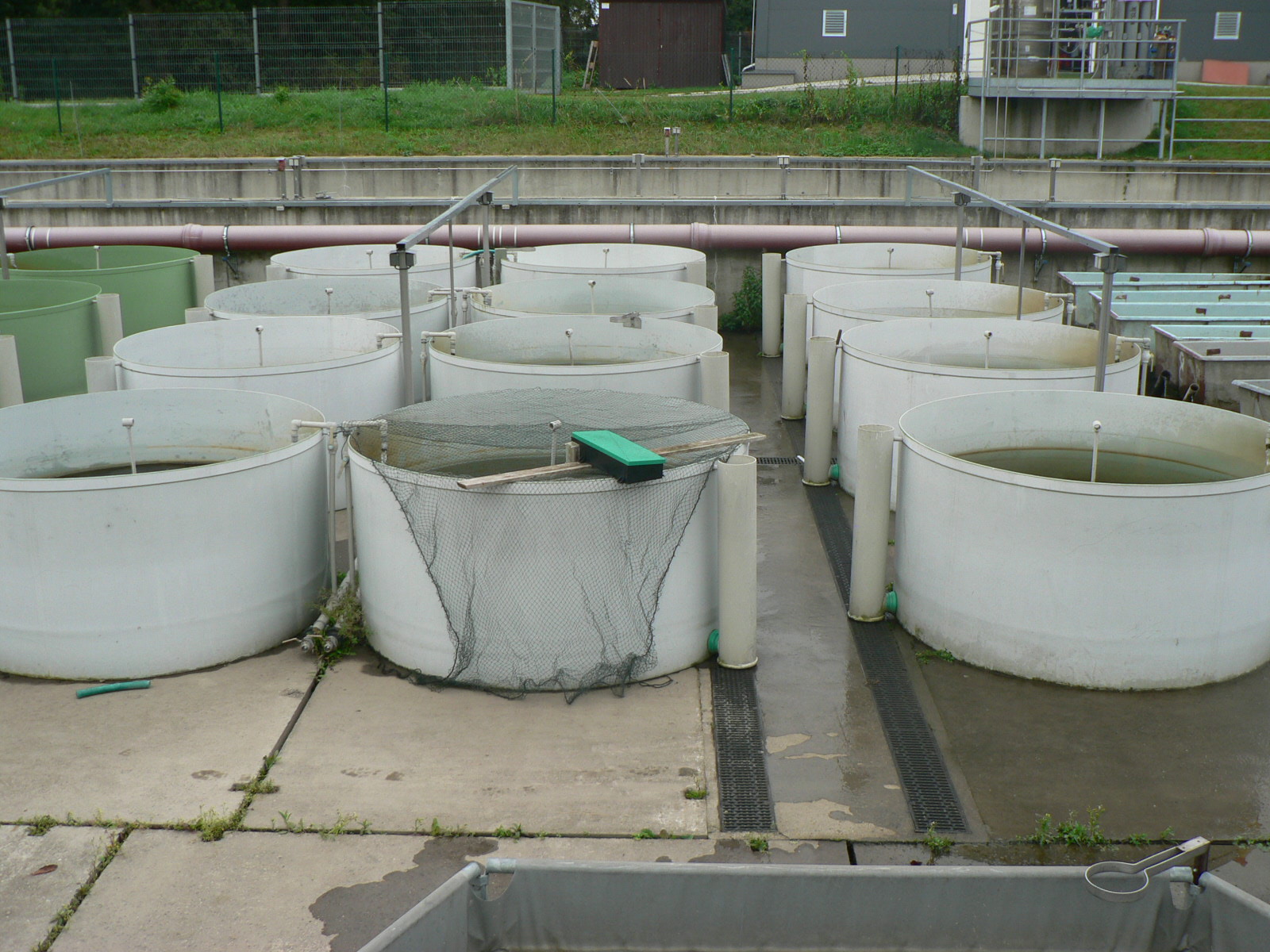 |
| 6 tanks in recirculation system with control conditions (800l) – for experiments focused mainly on the research of breeding technologies in Aquaculture | 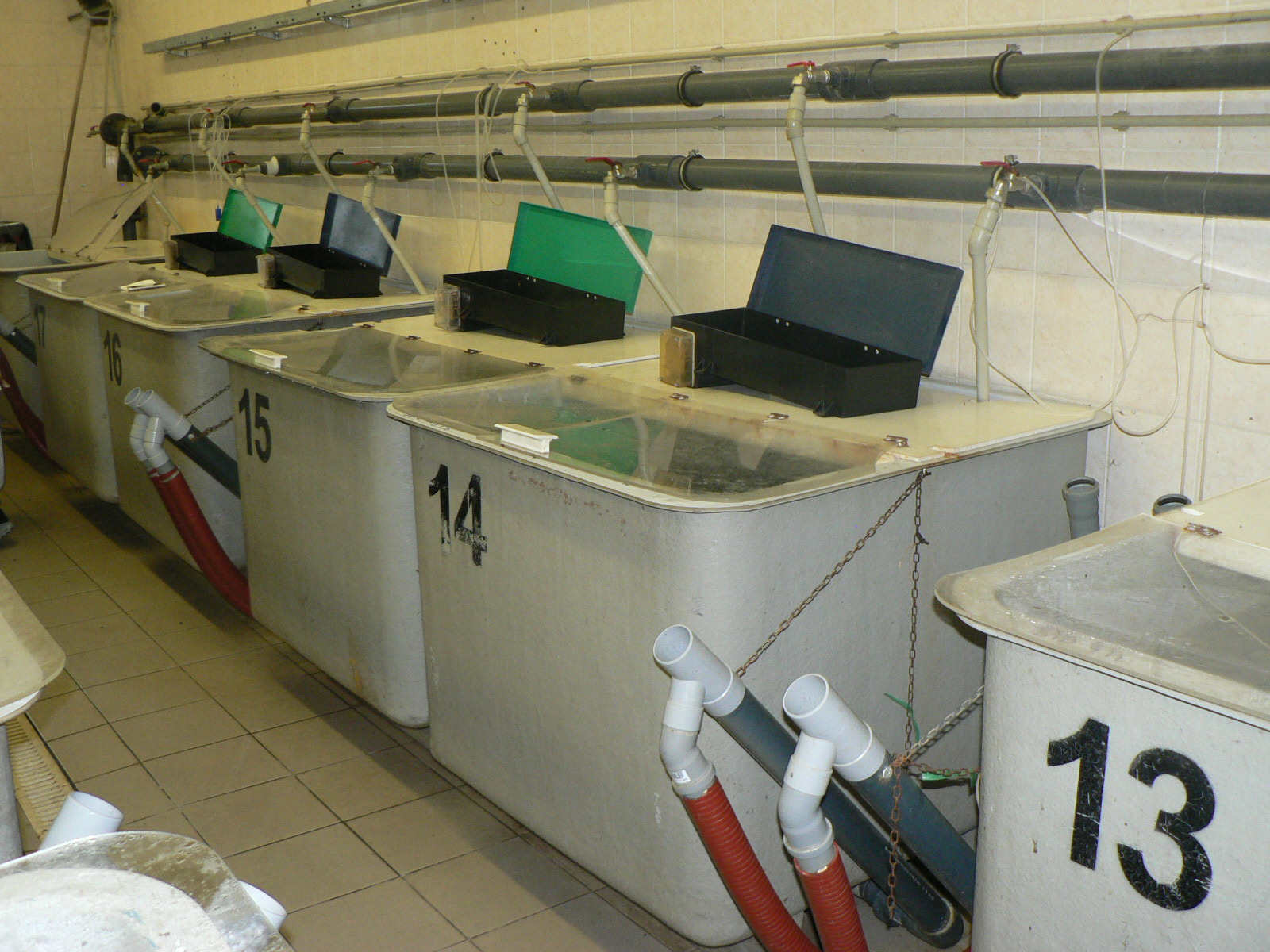 |
| Laboratory of Environmental Chemistry and Biochemistry | |
| Two-dimensional liquid chromatograph with high resolution mass spectrometer (QExactive) – analytical instrument used for targeted analysis of pharmaceuticals, pesticides, hormones, UV filters, perfluoronated substances and other micropollutants mainly in biological samples of aquatic organisms and plants | 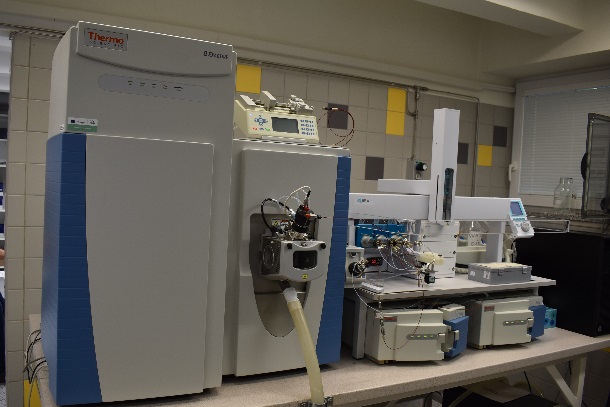 |
| Two-dimensional liquid chromatograph with high resolution mass spectrometer (QExactive-HF) – analytical instrument for targeted and untargeted screening of aquatic environment | 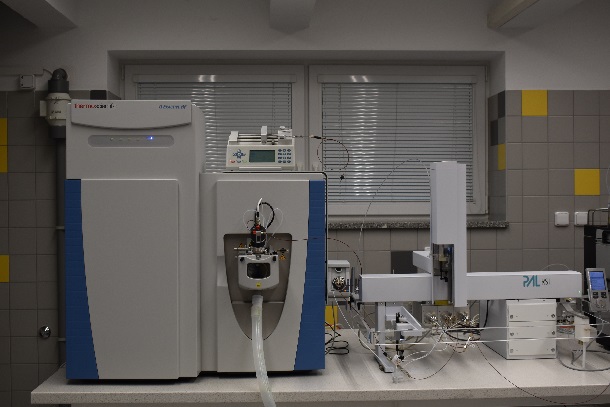 |
| Two-dimensional liquid chromatograph with triple quadrupole mass spectrometer (Quantiva) – analytical instrument used for quantitative determination of pharmaceuticals and pesticides in water, passive samplers, sediments, sludge and soils | 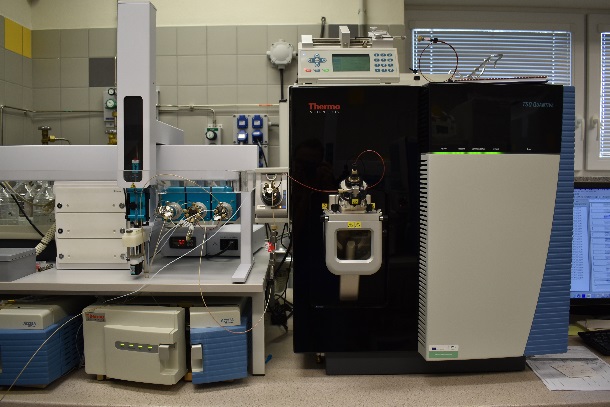 |
|
LC-QqQ-MS TSQ Altis is a triple quadrupole mass spectrometer suitable for quantitative analysis on residual concentration levels of compounds; Ion source allows the use of heated electrospray or chemical ionization; A two-dimensional liquid chromatography system allows online solid-phase extraction suitable for residual analysis of pollutants in the water sample matrix; The Autosampler unit has a capacity of up to 324 samples; Analysis of 109 pharmaceuticals, 110 pesticides, and their metabolites; Sample types- soil, sludge and passive sampler extracts, water matrix;Limits of quantification- ng/mL (extracts), ng/L waterody. |
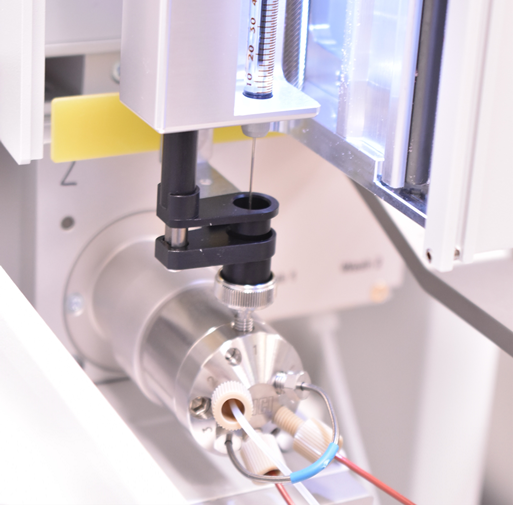 |
| Laboratory of controlled reproduction and intensive fish culture | |
| Experimental recirculating aquaculture system for growing trials on fish. Fully equipped modular experimental system is available. | 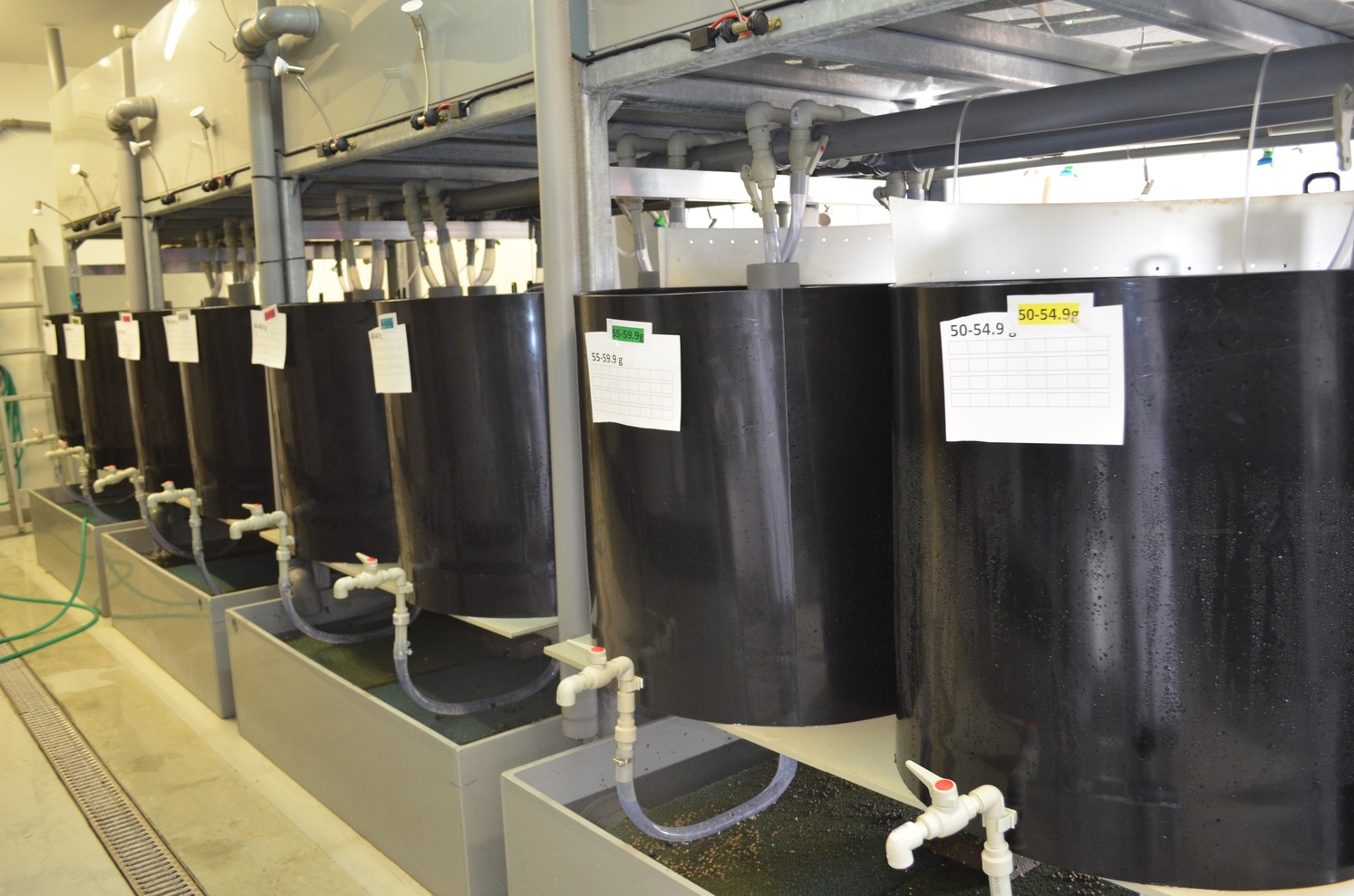 |
| Self-feeding system for feed distribution (dosing of precise amount of feed) and evaluation of feed demands. Software allow creating of feeding protocols and evaluation of feeding behaviour. Software control culture on three levels (overview about reared fish, evolution in time and detail in each culture unit). | 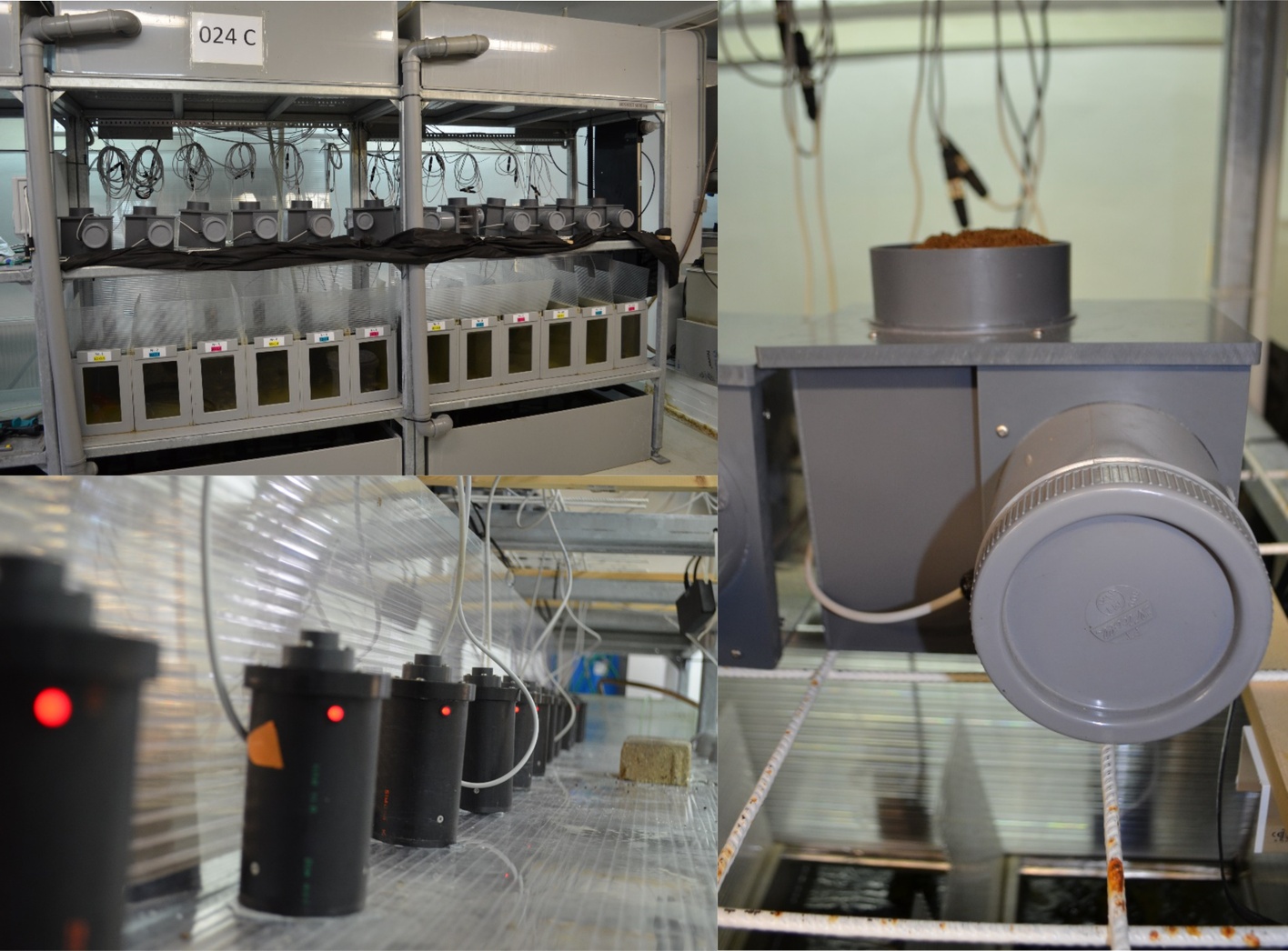 |
| Complete system of swimming tunnels / respirometers for computer assisted intermited respirometry. The system allows fully automated measurement of oxygen consumption, evaluation of the critical swimming speed (Ucrit) and fish behavior. For research focused on biomechanics, physiology of swimming, metabolism and ethological studies. | 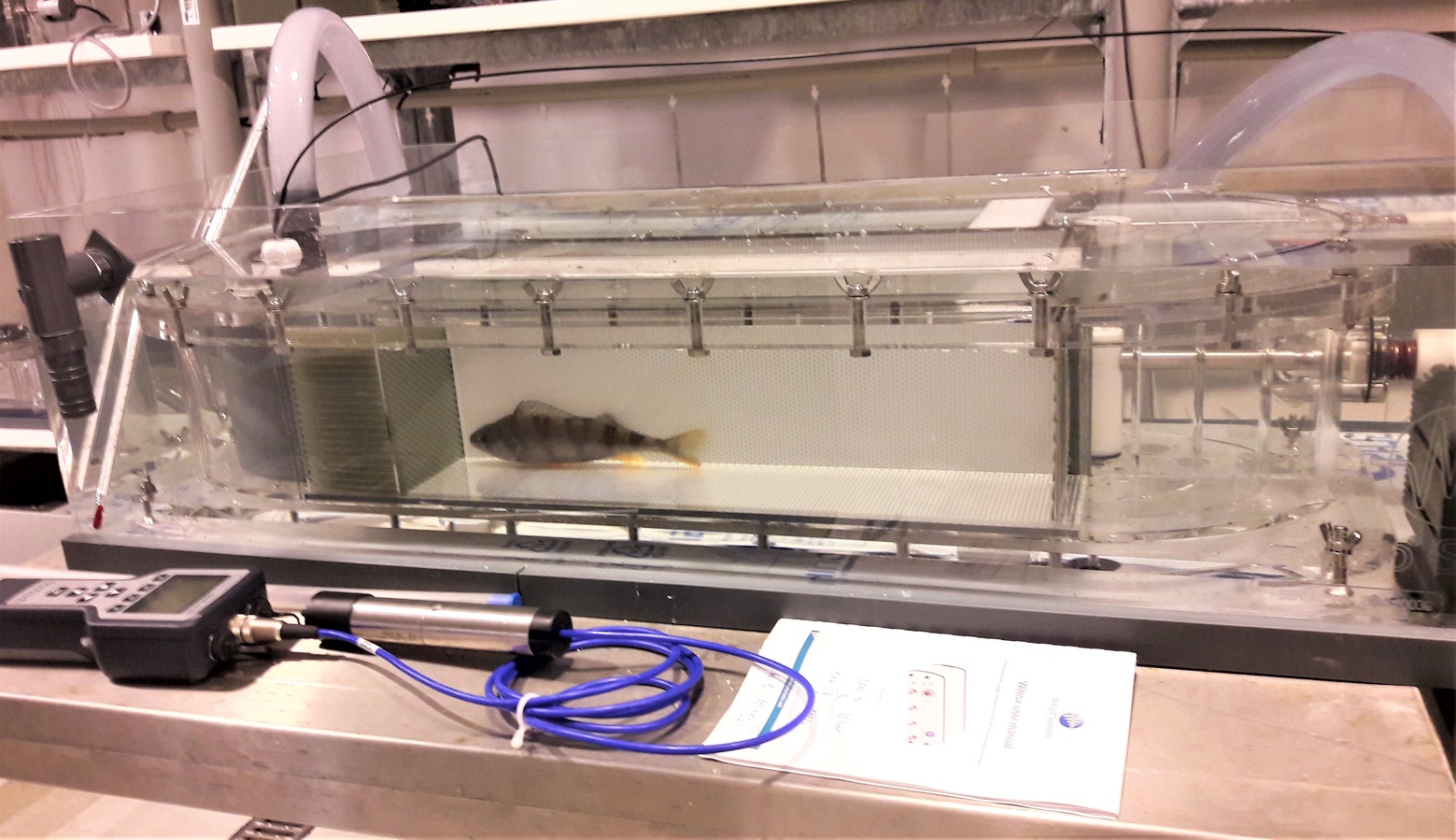 |
| Laboratory of Reproductive Physiology | |
| Evaluation of sperm quality and motility (including flagellar motion) before and after cryopreservation. Involves several microscopes connected to digital and analog video cameras, covers different contrast methods (BF; DF; PH), temperature diapason (4 - 37°C), frame rate (5 – 5000 FPS), magnifications (up to x100) and resolutions (up to 3200×1800) during motility records. | 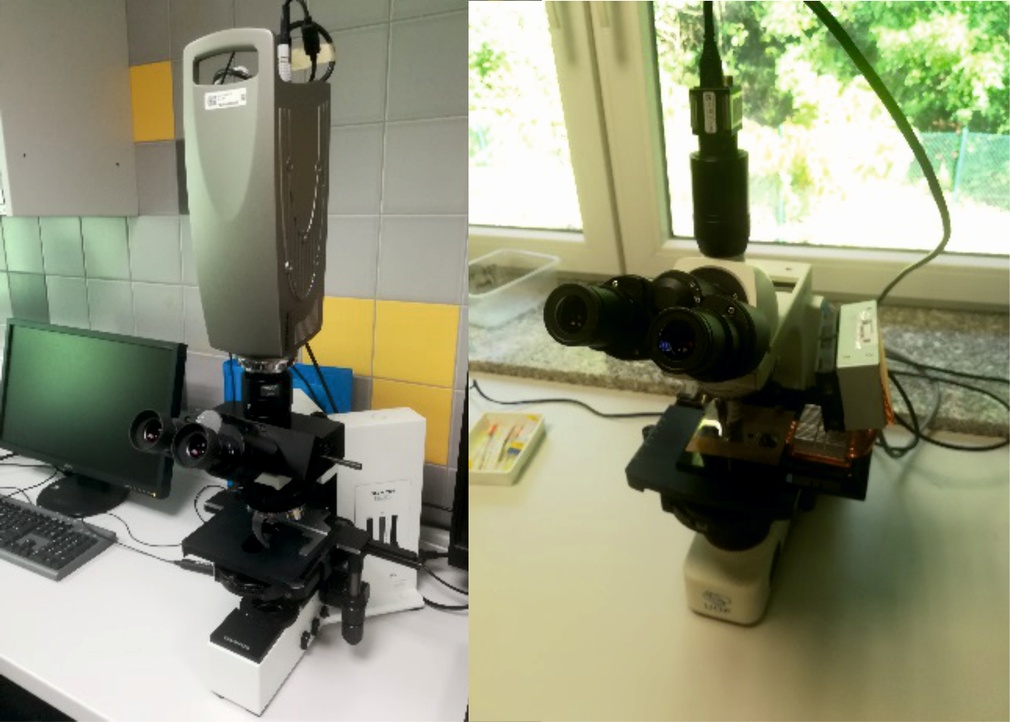 |
| Laboratory of Aquatic Toxicology and Ichtyopathology | |
| Gene expression analysis and other biochemical analyses. Equipment: Real-Time PCR cycler, Bioanalyzer, Nanodrop, Infinite M200PRO fluorescence and luminescence spectrophotometer (TECAN), SPECORD two-beam spectrometer. | 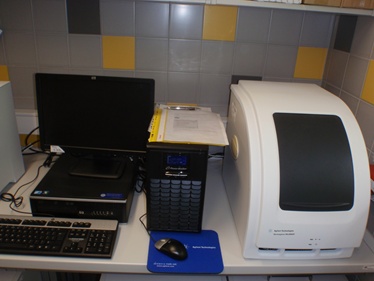 |
| Histopathological examination of tissues of aquatic organisms - is based on a complete device for the preparation and analysis of histological preparations of tissues of organisms. Equipment: Histomaster dewatering machine (Model 2052 / 1.5), modular potting paraffin line (Leica EG1150), semi-automatic rotary microtome, automatic coloring line (TISSUE-TEK® DRS ™ 2000, SEKURA) and MOTIC microscope. | 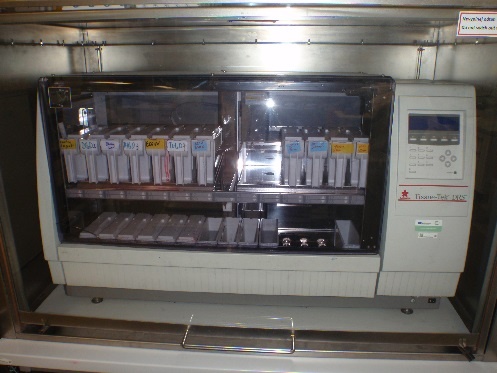 |
| Laboratory of Intensive Aquaculture | |
| Two identical experimental rooms for reproduction and intensive aquaculture. In each room there are nine 360 L tanks connected to the complete RAS with the possibility to control the light and temperature regime. Culture systems can also be used for experiments related to the final reproduction phase of fish, culture of juvenile fish under different stocking densities, feeding management using self-feeders and different dissolved oxygen level. | 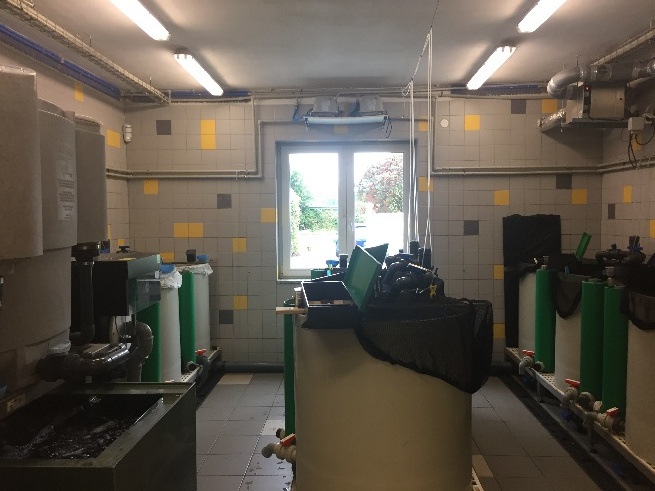 |
| The fully acclimatized room is fully equipped for intensive culture of cold-water fish (salmonids and whitefish species) and for stimulation of out-off-season spawning of various fish species. This room contains four 1500 L tanks and six 360 L tanks connected to a complete RAS. | 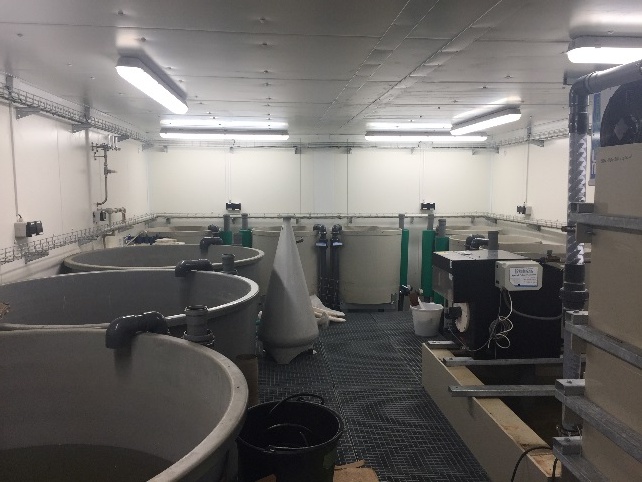 |
|
Experimental hall for intensive aquaculture with a total capacity of twenty 1500 L tanks connected to two separate RAS. This equipment can be used for mass scale experiments with the aim to optimize intensive aquaculture in terms of water quality, feed management, nutrition, stocking density, fish sorting, ozone using, etc |
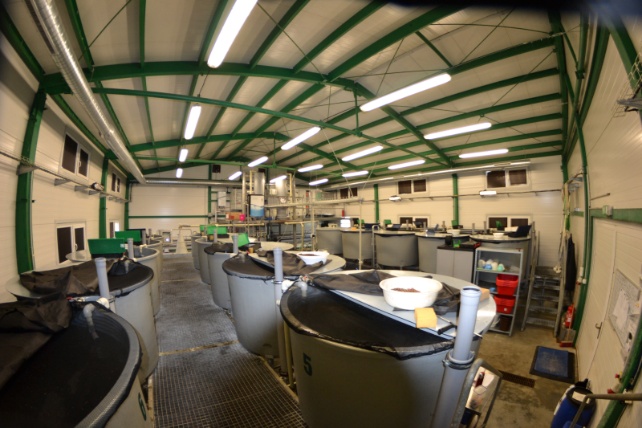 |
| Laboratory of Molecular, Cellular and Quantitative Genetics | |
| Applied Biosystems 3500 and Genetic Analyzer Next generation sequencer Ion Torrent™ PGM for sequencing of mitochondrial and nuclear genes. Gene sequencing is used especially to parentage assignment, to identify monosex fish stocks and to study the mutual genetic and molecular biological status of fish and crustacean populations. | 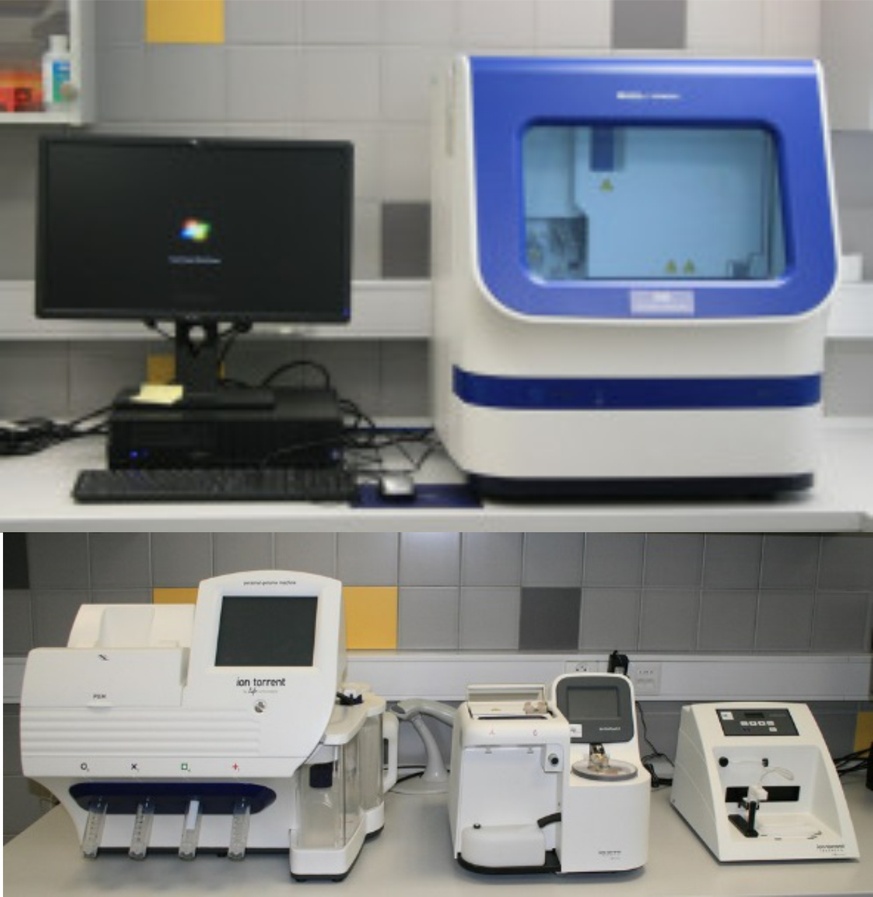 |
| Flow cytometers Partec CCA-I and CyFlow® Cube 8 are used especially for determination of the ploidy level on the basis of relative DNA content in nuclei of fish somatic cells or gametes stained with DNA-specific dyes. Another possibility is the stipulation of volume and concentration of measured particles. | 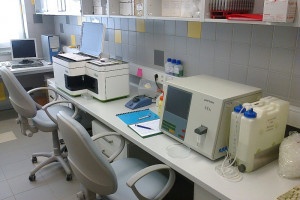 |
| Laboratory of Germ Cells | |
| Zebrafish housing system – semiautomatic system for rearing of small fishes and for initiation of feeding of fish larvae. | 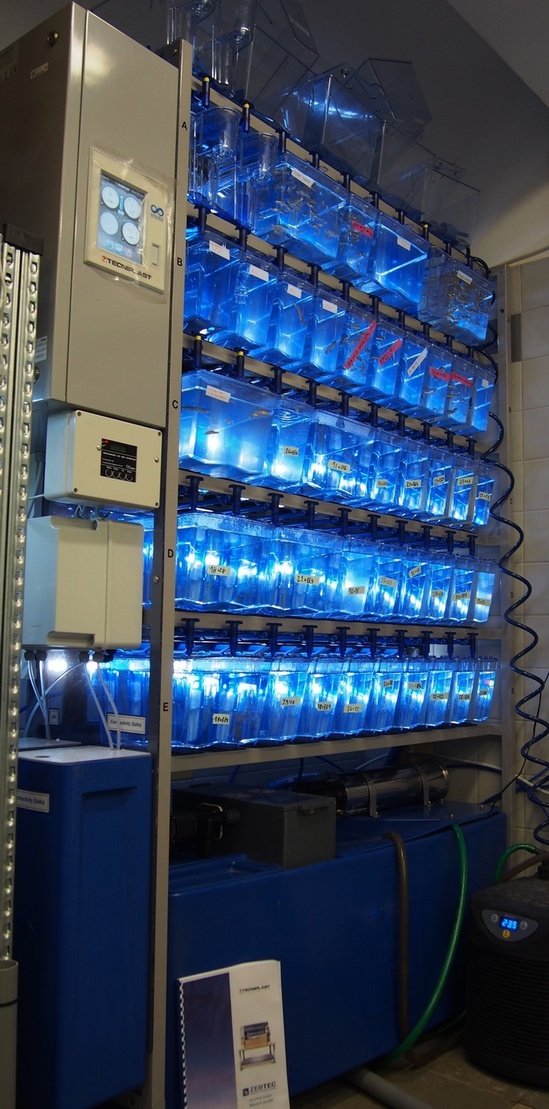 |
| System for fish embryo injection and micromanipulation – it is suitable for all fish species from early embryonal stages to larval stages. | 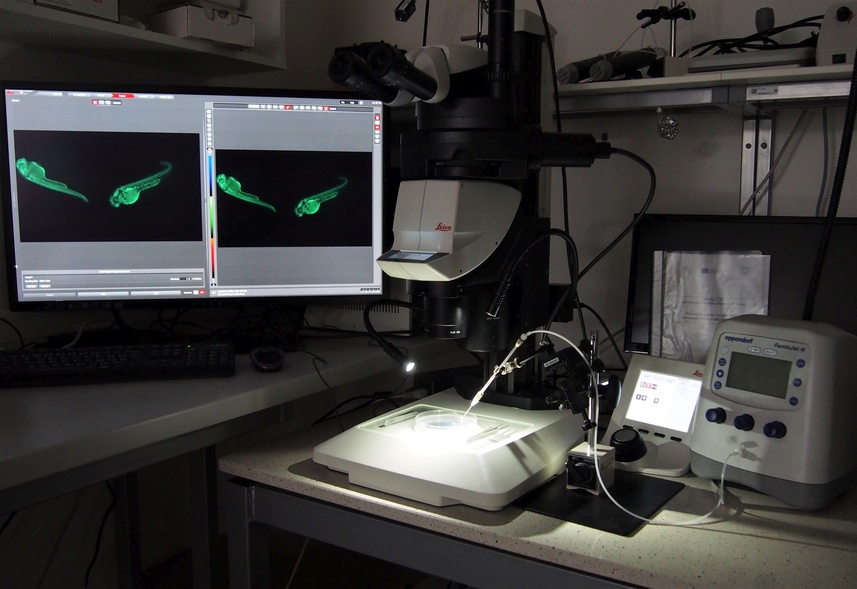 |
| DNA content analyser – user friendly flow cytometer enables evaluation of relative DNA content in the cell nuclei | 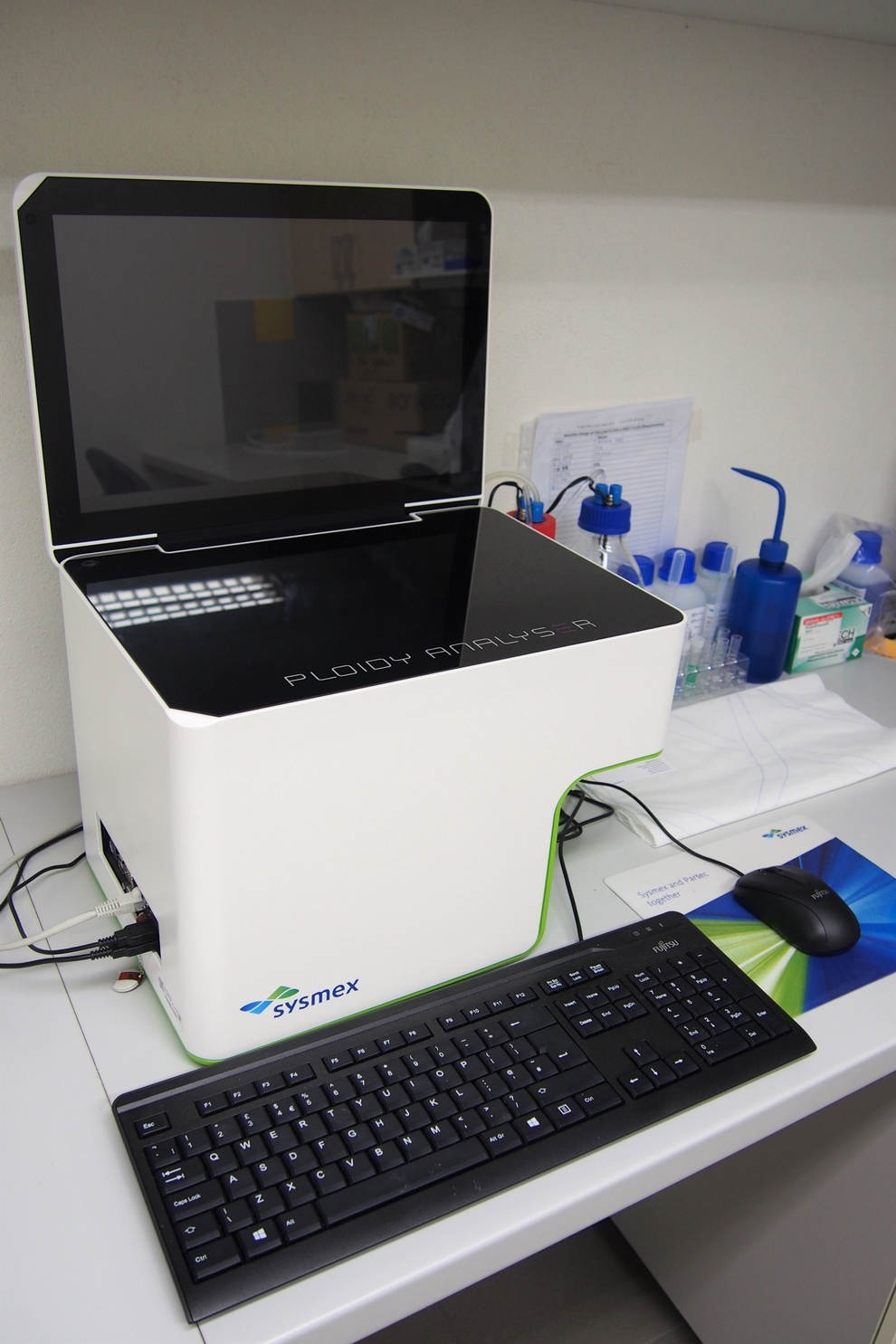 |
| Capillary electrophoresis – electrophoretic system with resolution under three bases is suitable especially for more precise determination of PCR product size. | 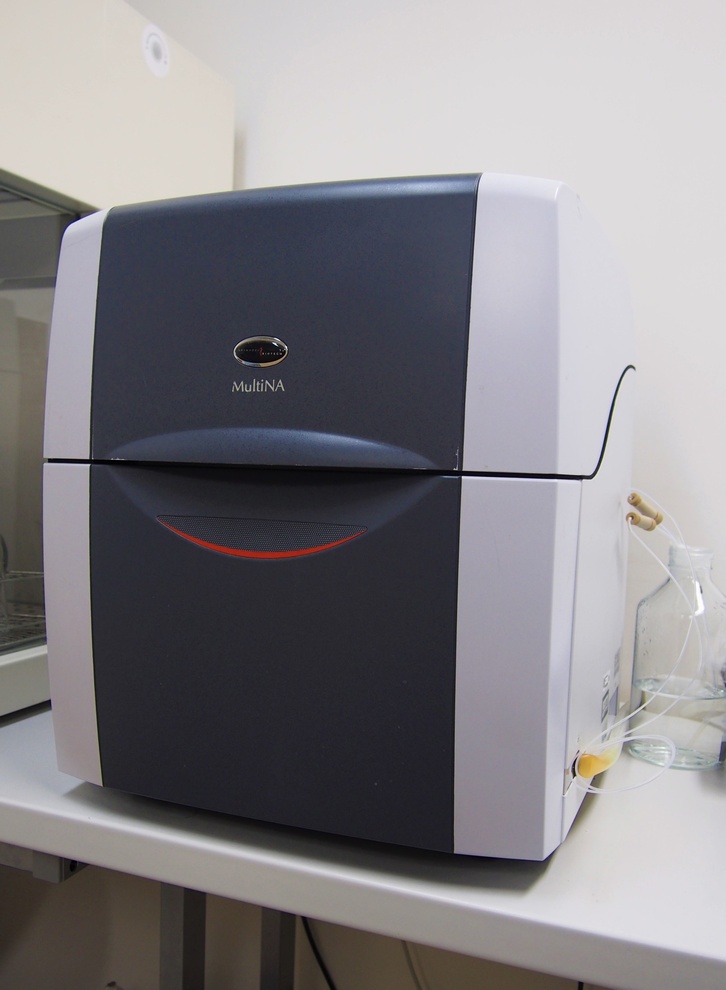 |
| Laboratory of Machine Vision Processing in Aquaculture and Water Protection | |
| Monitoring systems for fish ethological studies - based on 3D cameras allow automated recording and evaluation of fish behavior in aquariums and tanks | 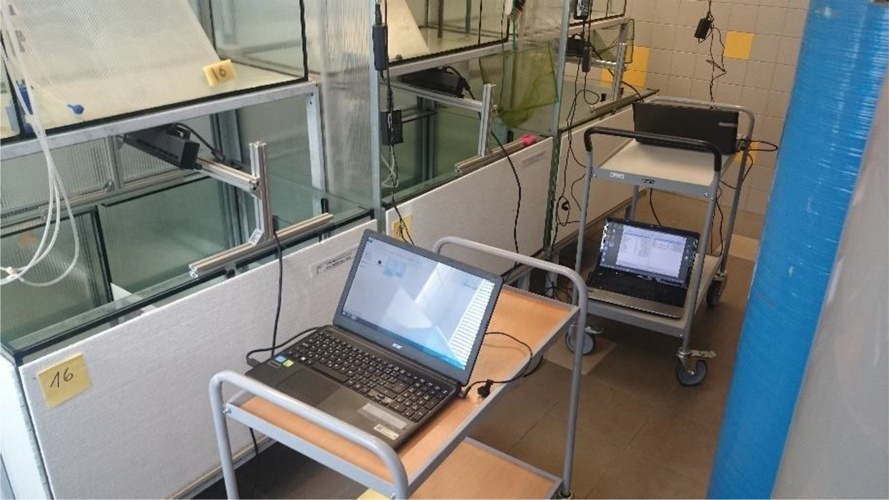 |
| Hyperspectral camera - Scanning and analyzing samples using hyperspectral camera, surface reflectivity analysis of materials that are subsequently correlated with substance content or material composition, typical task is analysis of fish appearance using different diets, scanning camera allows processing of any materials - visible + near infrared spectrum | 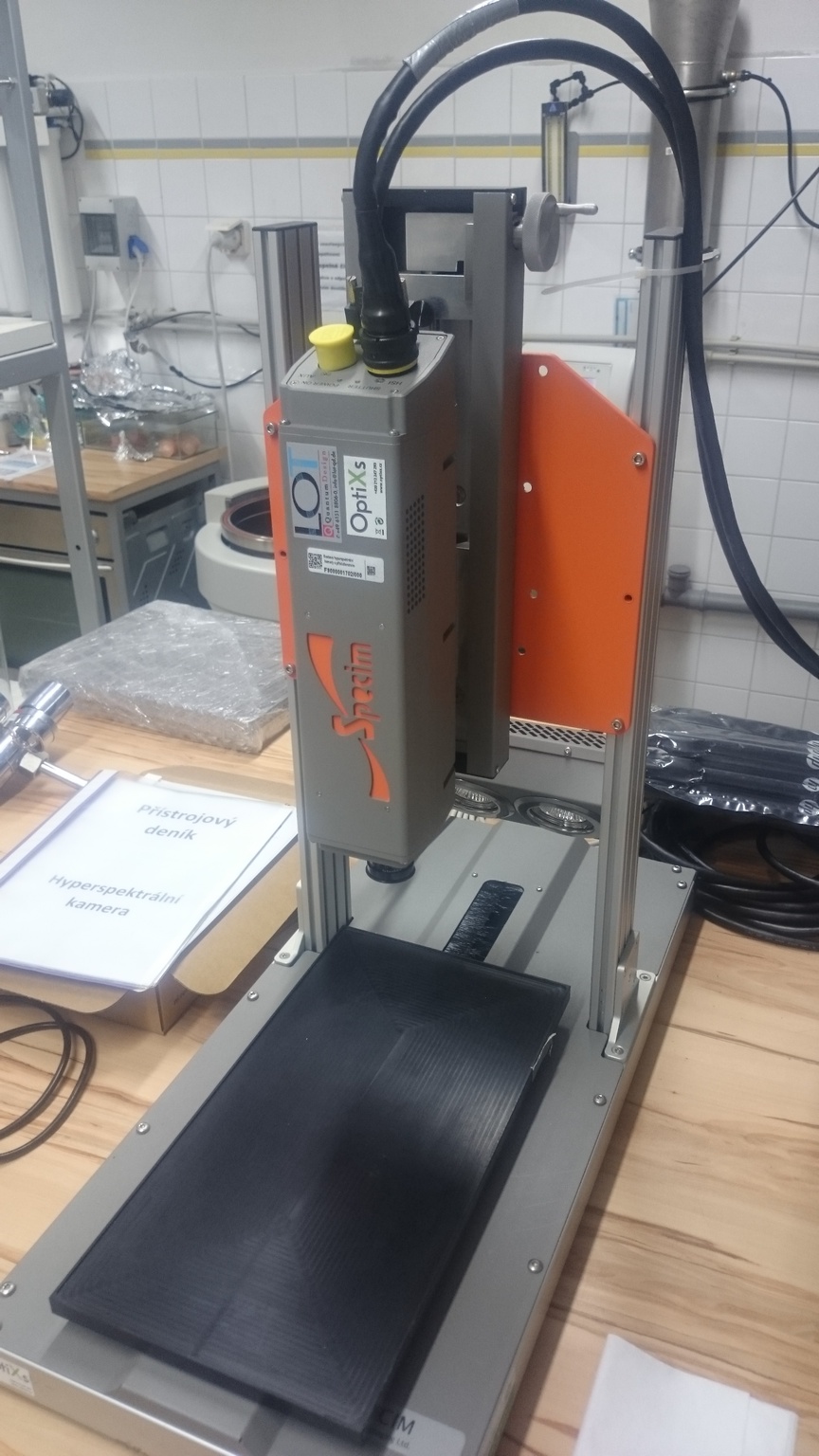 |
| Laboratory of Nutrition | |
| Aquaponics hall contains 6 independent recirculating aquaculture systems with waste water collection and mineralization. 200 square meters of greenhouse with 4 types (raft, ebb and flow, dripping and aeroponic systems) of hydroponic systems (each with at least 6 replicates). | 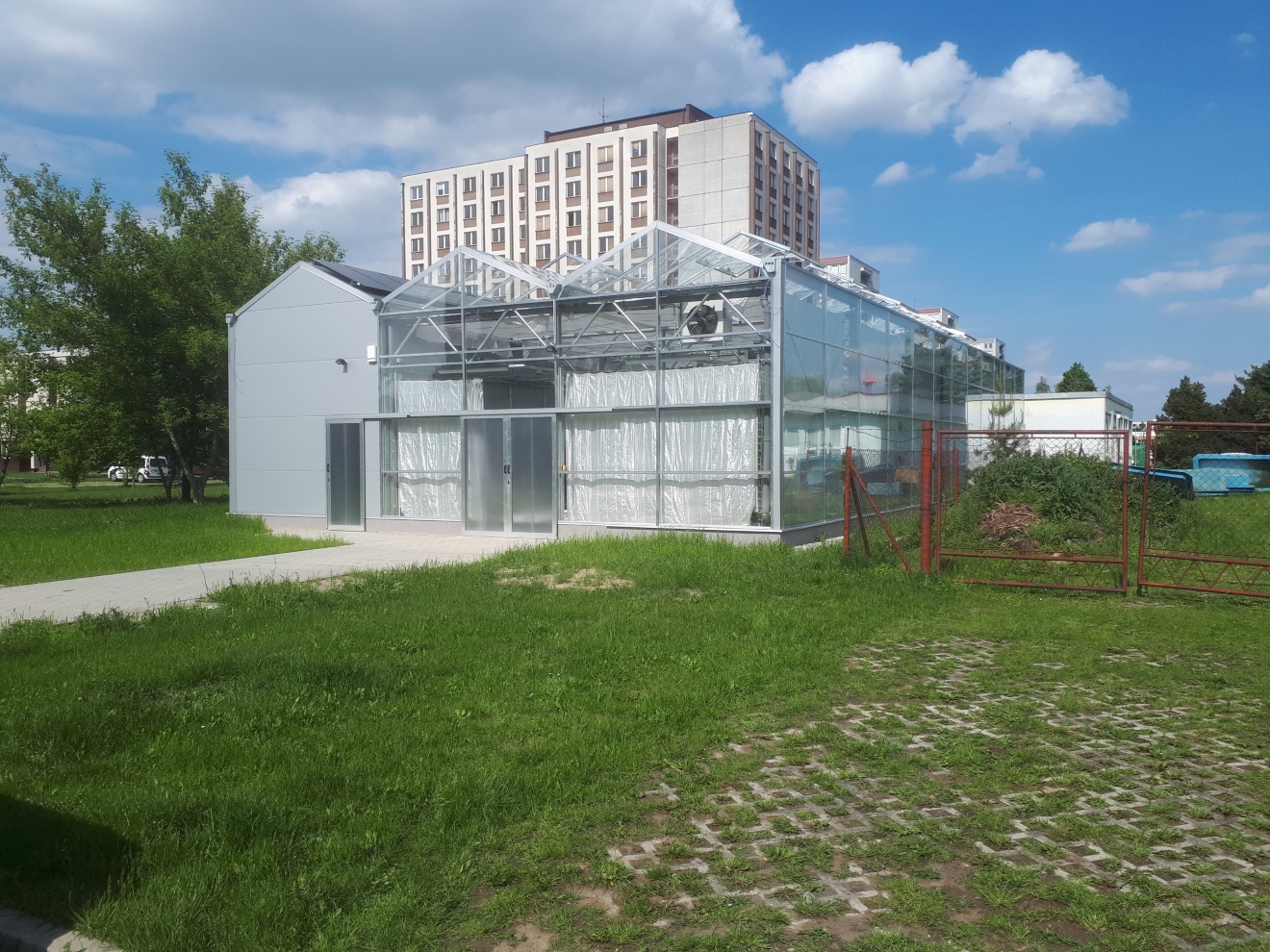 |
| Chromatography lab including sample preparation room for complex analyzes of feeds, fish products, feaces and other matrices. Available instuments are: GC-MS, HPLC, HPTLC, Maldi-tof. | 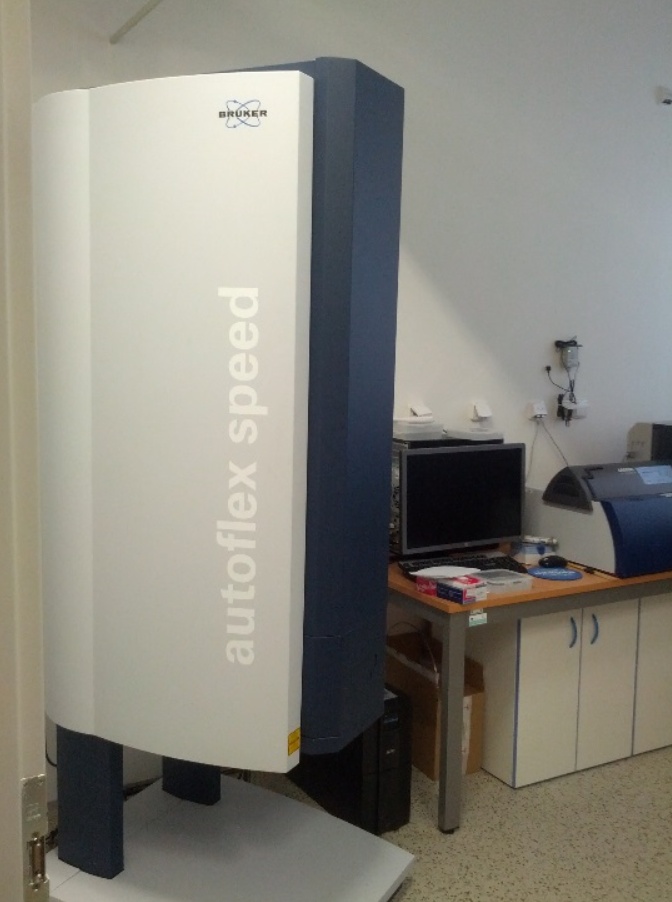 |
| Fully equipped fish processing plant for production and development of fish products (chilled, frozen, smoked, cooked, marinated), including analytical background for studies of postmortem changes in fish and assessment of fish product quality. | 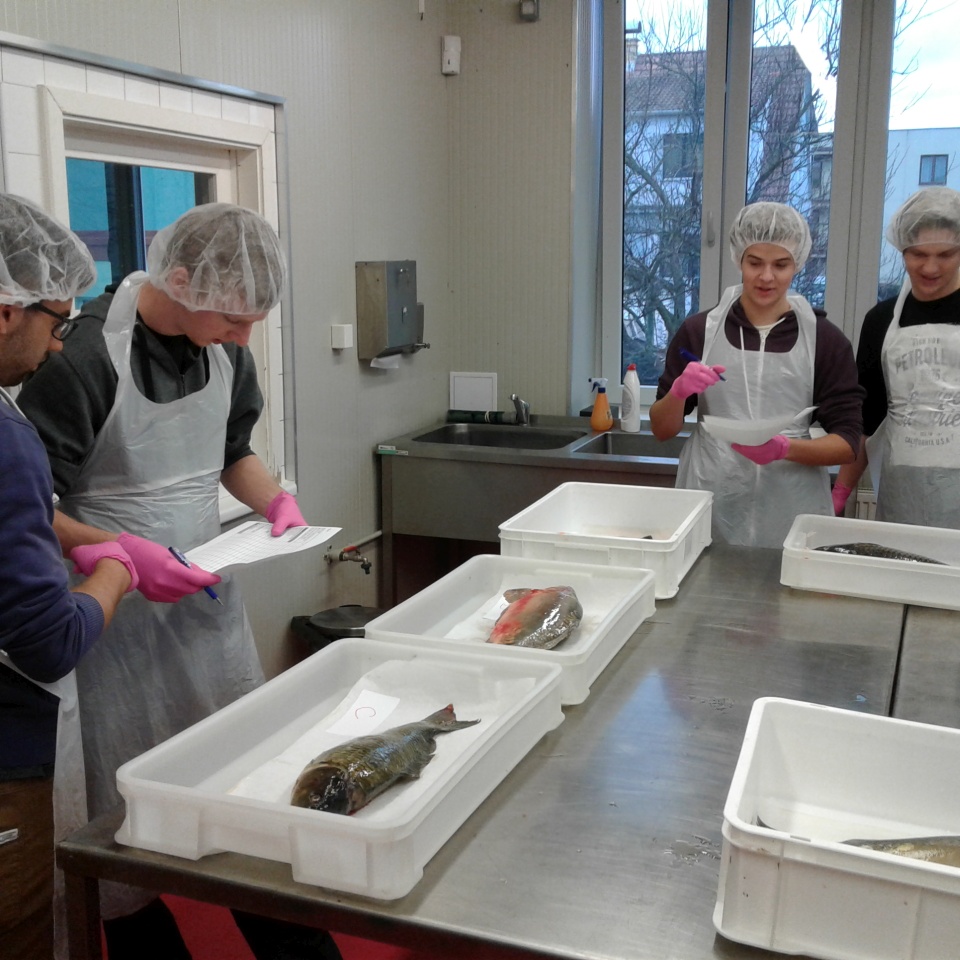 |
| Laboratory of Freshwater Ecosystems | |
| EthoVision® XT set-up – ethological software with equipment (hardware, video-cameras, experimental arenas) in the ethological laboratory. Enables observation of aquatic organisms and automatic evaluation of their behavioural patterns. Possibility of simultaneous observation up to 96 arenas. | 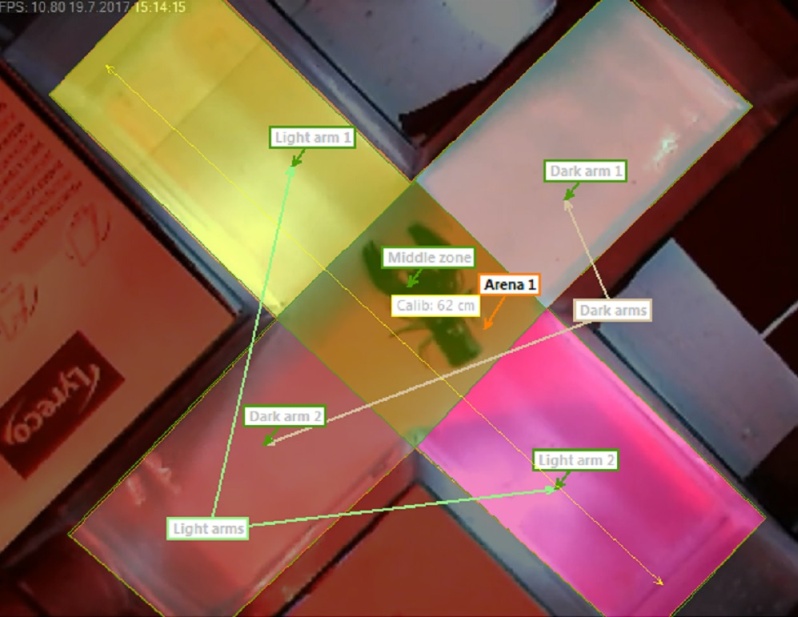 |
| Simulator of flow conditions for fish and crayfish. Enables to mimic the conditions of running waters for experimental observation of fish and crayfish. | 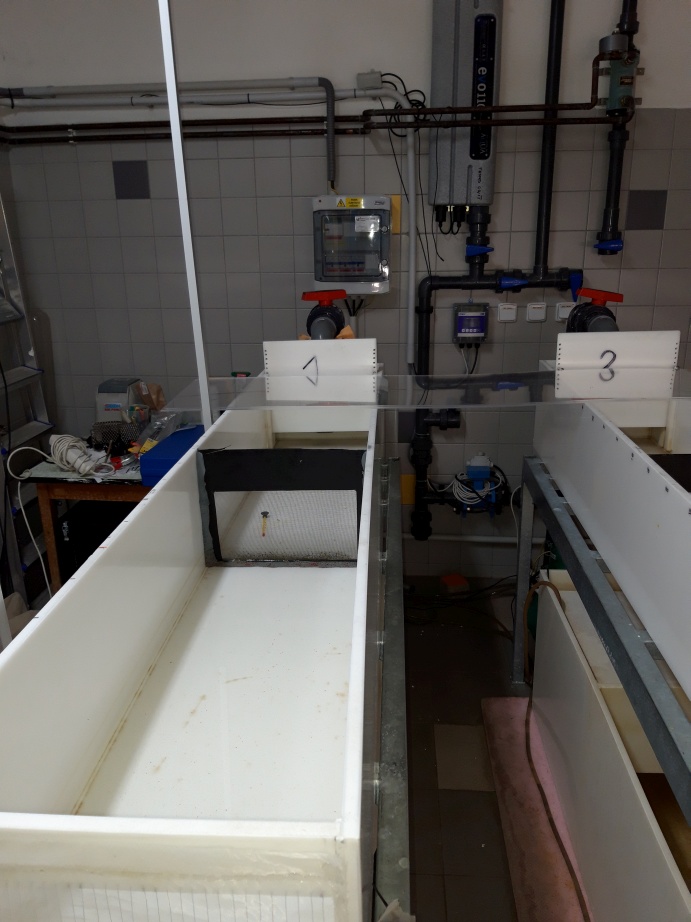 |
| Aquarium room. Infrastructure used for maintenance and culture of crayfish and for experimental set-ups. | 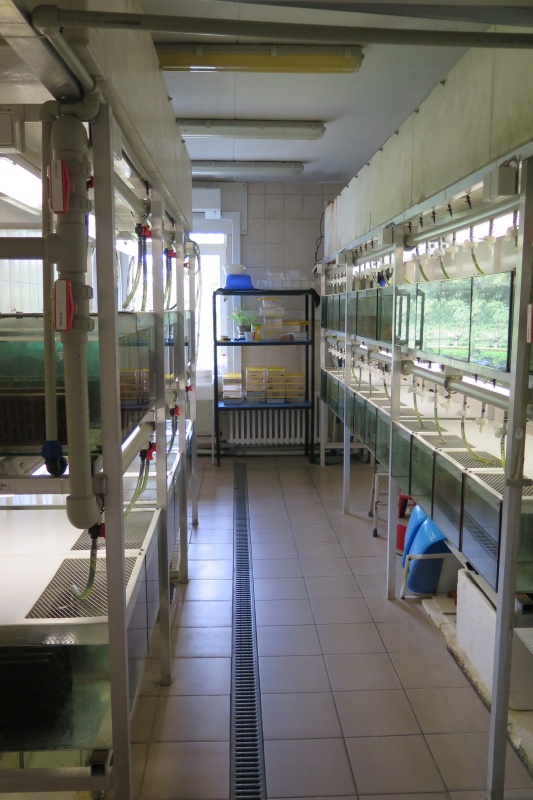 |
| The set of incubators in the hydrobiology laboratory. Enables maintenance of aquatic organisms and experimental works in temperature specific conditions (4 – 40°C). | 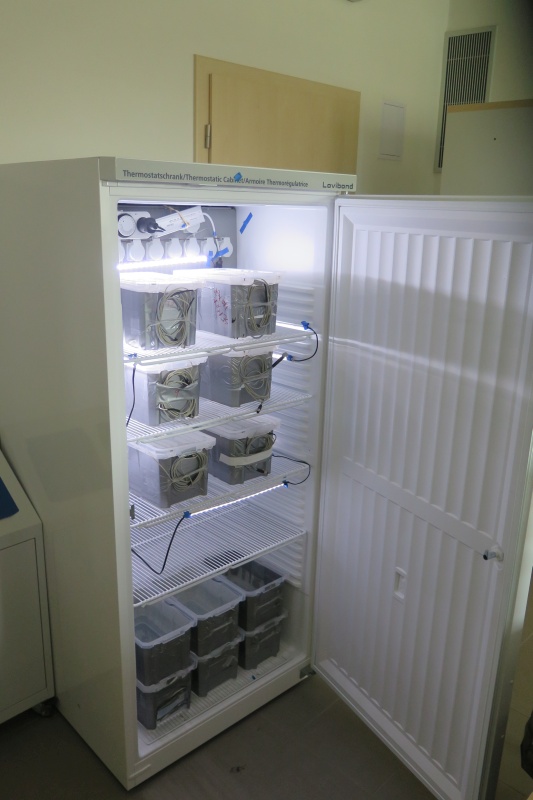 |
| Heart rate monitoring system for crayfish and bivalves. Non-invasive measurement of heart rate of crayfish and bivalves under laboratory conditions. | 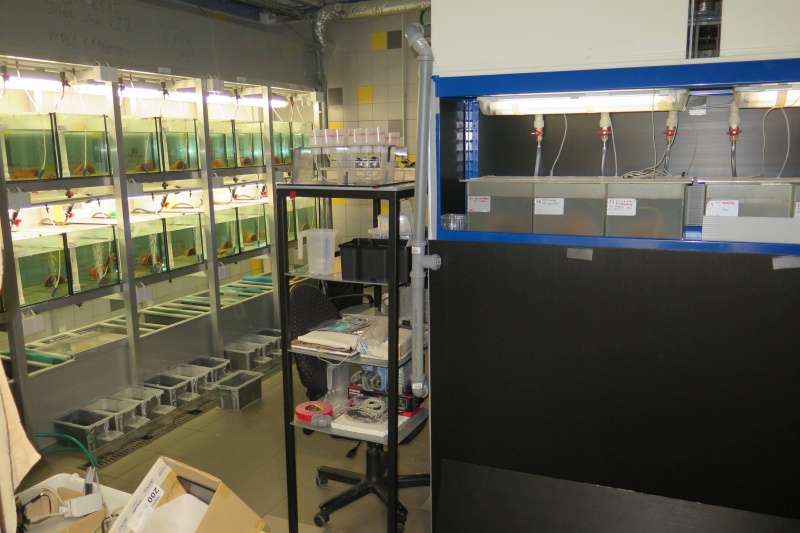 |
| Facilities for rearing and experimental maintenance fish or crayfish (outside and inside systems of tanks). Maintenance and culture of fish and crayfish and for experimental work under natural ambient as well controlled conditions (including the possibility of the water recirculation). | 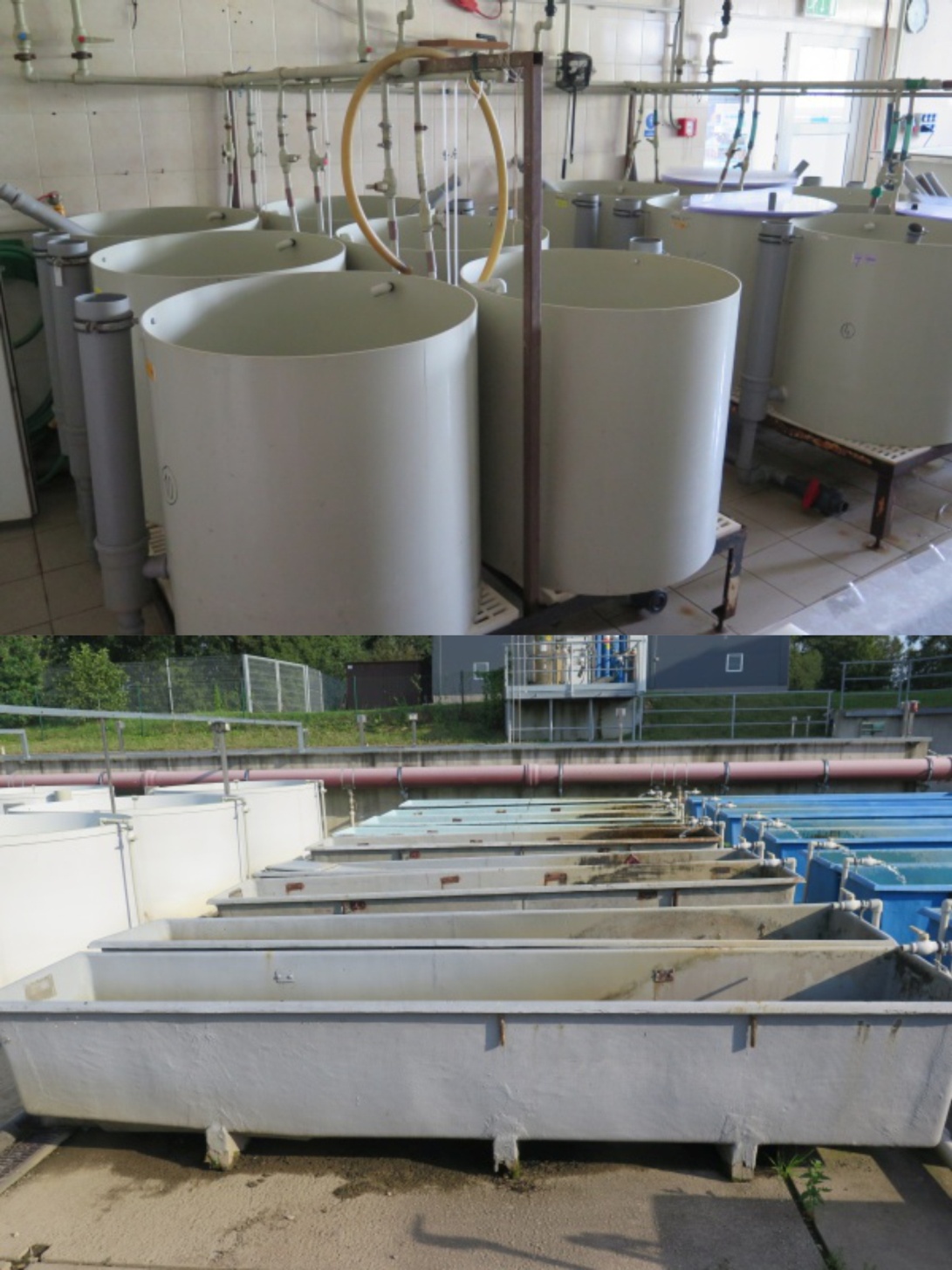 |
| DanioVision® set-up with equipment in separated laboratory. System enables observation of development and life manifestations (including heart rate activity) of aquatic organisms during embryonal and postembryonal development under controlled light and temperature condiditons. | 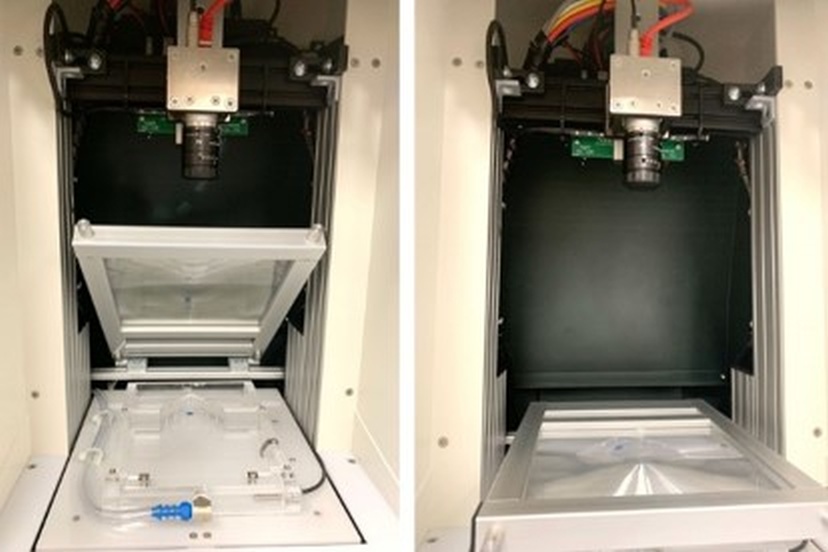 |
| Sampling of water and hydrobionts (fish, zoobentos, zooplankton, phytoplankton) in freshwaters (pond and their tributaries, different types of streams and rivers, lakes), measurements of physical and chemical parameters of water, samples processing and analysis. | 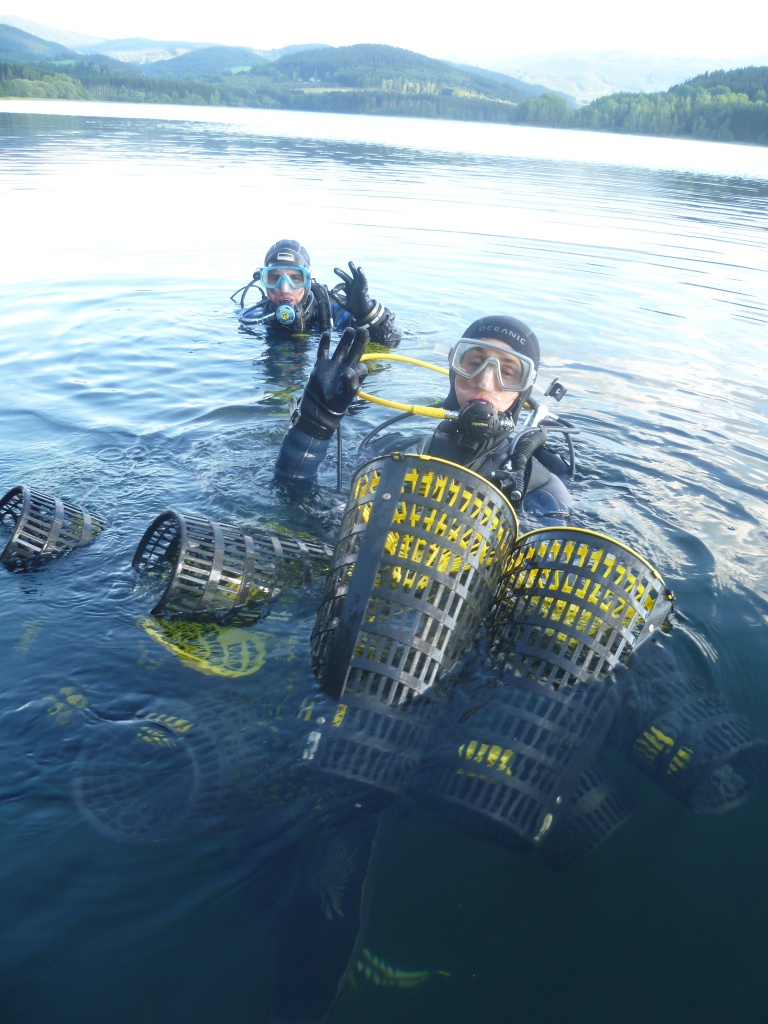 |
| Facility for ecological and ethological studies of hydrobionts, observation of their foraging behaviour (mainly fish and macrozoobenthos), experimental works on zooplankton and phytoplankton, and early developmental stages of fish, and for evaluation of approaches and preparations for artificial reproduction of fish. | 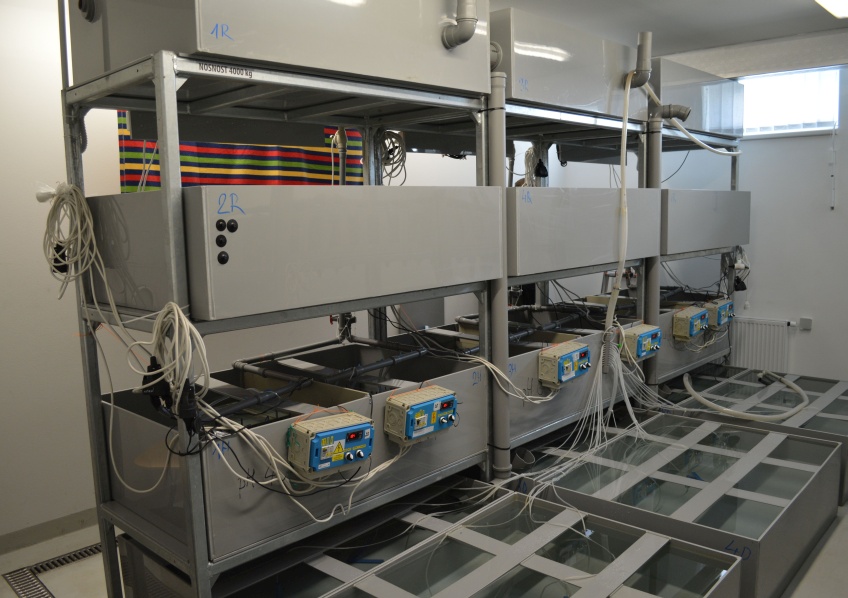 |
Laboratories in cooperation
|
Department of Technology and Cybernetics Studentská 1668, 370 05 České Budějovice |
|
|
Photoacoustic Gas Monitor – Innova 1512 Available from 01/2022
Photoacoustic Gas Monitor – Innova 1512 can simultaneously monitor the concentration of CO2, NH3, and water vapour in any air sample based on the principle of photoacoustic infrared spectroscopy. The device is well suited and very efficient in both short and long-term monitoring applications. In short-term monitoring, the benefit is portability, minimal warm-up time, and built-in data storage capability. In long-term monitoring, the system is especially stable, includes a multi-point sampling option and data handling. The device is equipped with a converter capable of taking samples from up to 12 different locations and can operate in difficult microclimatic conditions such as those in livestock farms. The detection limit for CO2 is 13 ppm, and for NH3 is 0.20 ppm.
Contact: Dipl.-Ing. Radim Kuneš, Ph.D. E-mail: Phone: +420 606 263 674 |
|
|
Laboratory of Molecular Integrative Physiology in Drosophila, Branišovská 1760, 370 05 České Budějovice |
|
|
High-resolution 3D X-ray microscope Available form 02/2022
Visualization of complex internal structures of biological objects without the need for their disintegration by fixation and tissue section is one of the challenges of modern biology. To overcome this limitation, we will soon operate the High-resolution 3D X-ray microscope. A series of hundreds of X-rays of a rotating object enables the subsequent 3D reconstruction of objects and their internal structures with a resolution of fewer than five μm. The device can be used to scan various objects from plants, stones, composite materials, building materials, and even live animals. The combination of natural contrast properties of biological structures with specific contrast agents and antibodies provides an infinite potential for implementing this tool in research carried out not only at the Faculty of Science. Furthermore, compact layout, absolute safety, and simple operation allow independent work of doctoral students.
Contact: Mgr. Adam Bajgar, Ph.D. E-mail: Phone: +420 387 772 227 |
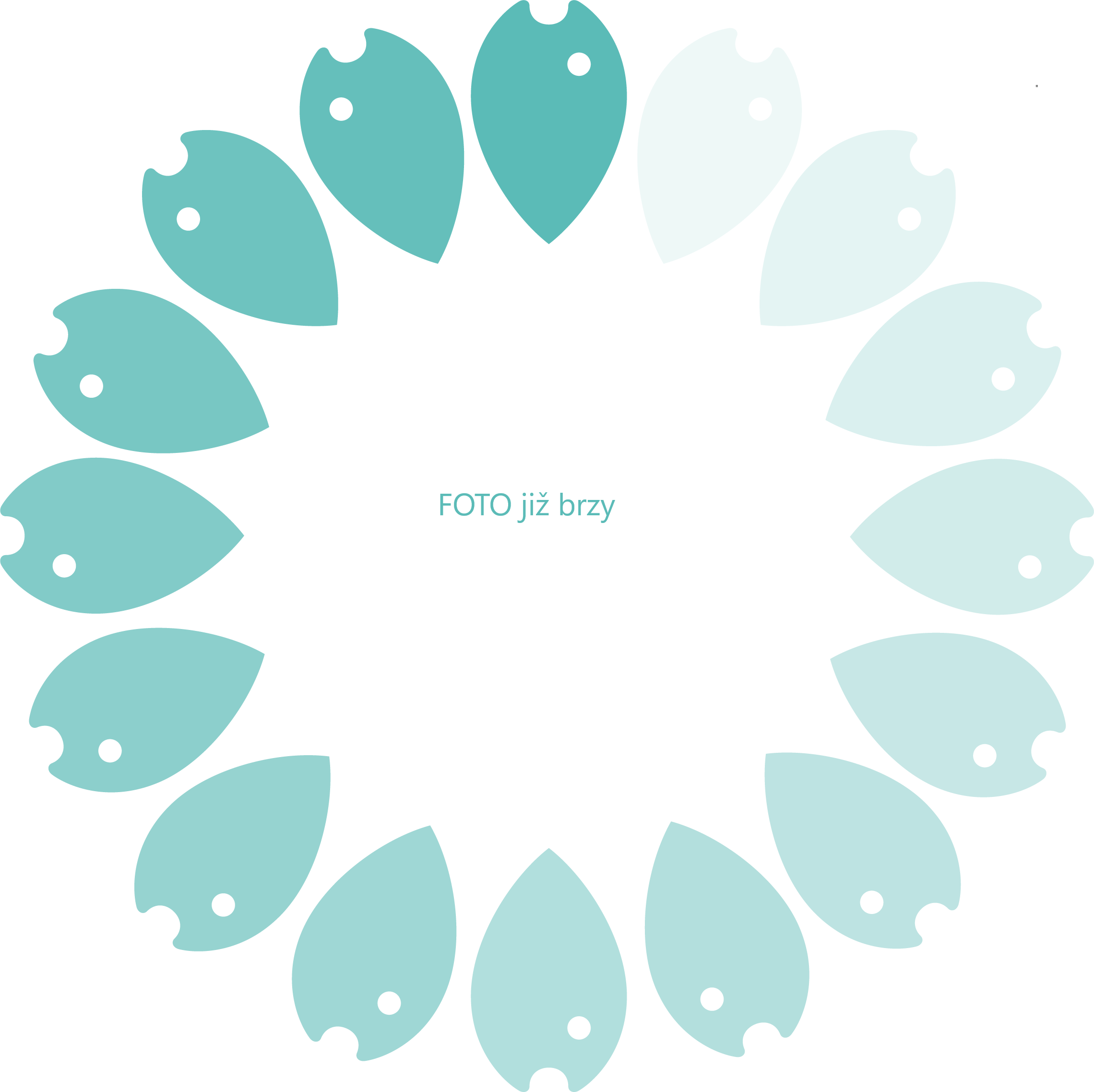 |
Charged SERVICES - EXTERNAL COOPERATION
For more information about these services, click here.
Open DATA
The data request form is available here.
Long-term environmental research - Elbe River
For open/shared data services, please contact Jaroslava Dubová, BBus., E-mail:
The dateset was designed to create a method for photo-based individual fish identification. The dataset consits of the fish images out-of water and under water for four fish speaces (salmon – 300 individuals, carp – 32 individulas, sea bass – 300 individuald, Sumatra barb – 42 indiduals). The fish were pictured from the side to capture the skin pattern on the right side. The skin pattern was used for individual identification. The fish was tagged with PIT tag for precise identification.
The detailed data description is provided in related scientific papers: salmom, carp, sae bass, sumatra barb.
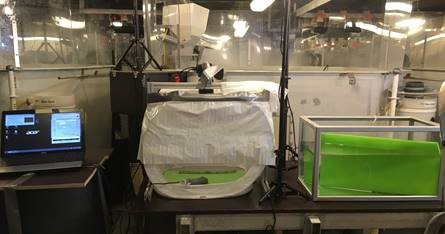
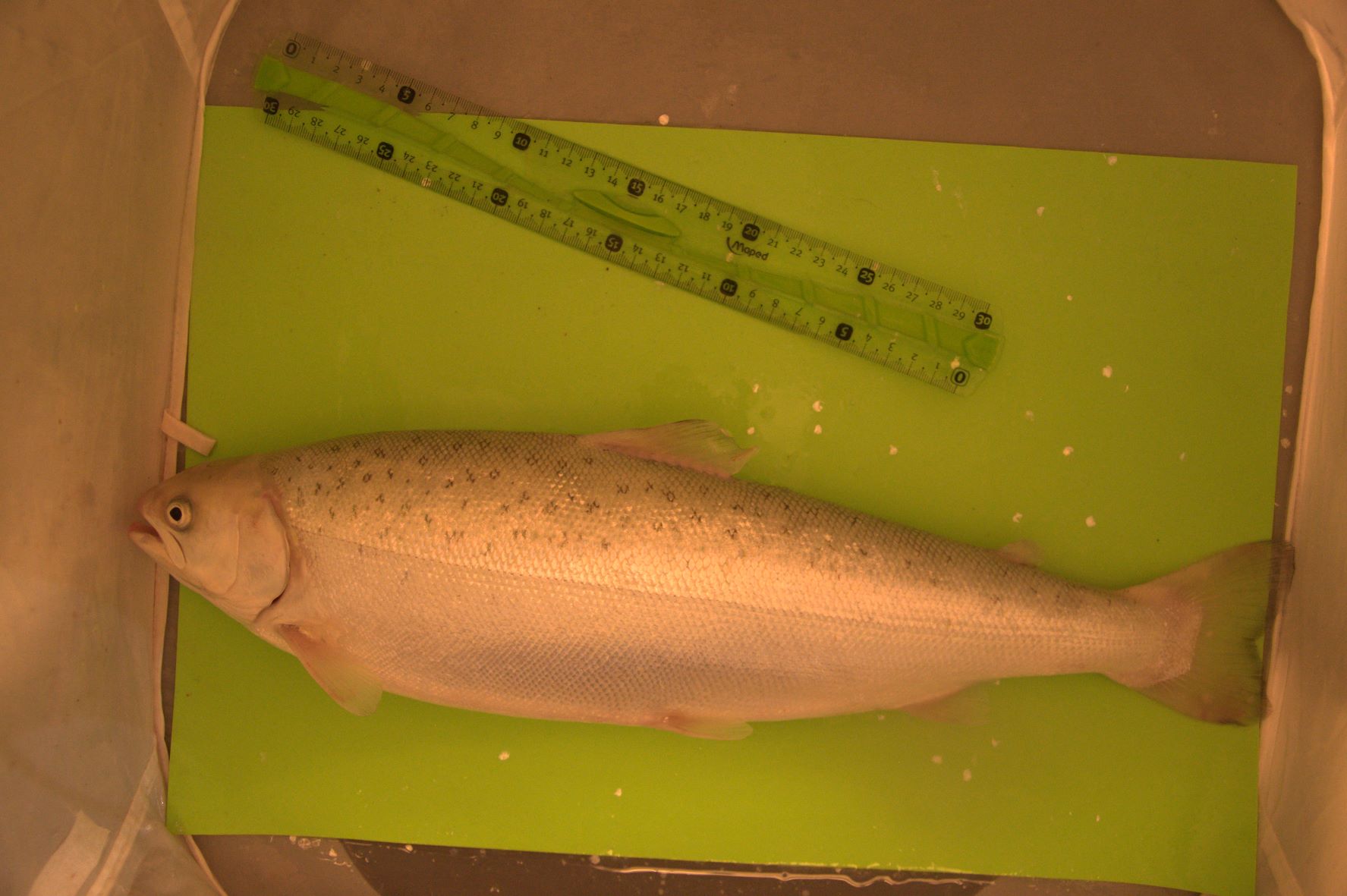
Fish skin pattern images by Petr Cisar, Dinara Bekkozhayeva, Mohammadmehdi Saberioon, Rudolf Schraml is licensed under CC BY-SA 4.0


For open/shared data services, please contact Jaroslava Dubová, BBus., E-mail:
Data file for a study examining various feeding strategies for juvenile pikeperch (Sander lucioperca) in a Recirculating Aquaculture System (RAS) over a period of 112 days. It compared five different feeding intervals (2 hours, 4 hours, 6 hours, 8 hours, and 12 hours) using an automatic feeder Imetronic® (Pessac, France). The results showed that shorter feeding intervals led to higher growth heterogeneity and slightly increased fin damage. However, all tested feeding frequencies provided sufficient nutrients for proper pikeperch growth and welfare. The 8-hour feeding interval was identified as optimal, supporting better conditions for fish (Fulton's coefficient), specific growth rate, survival rate, lower fin damage compared to other tested frequencies, and optimal levels of biochemical parameters in blood plasma.
The data of a study monitoring pollution in the Danube River were collected using an innovative approach that combined passive sample collection with chemical and bioanalytical analyses within the framework of the JDS4 survey. The study focused on the use of two types of passive samplers - silicone disks for hydrophobic compounds and AttractSPETM HLB disks for hydrophilic compounds. These passive samplers were deployed at nine locations for approximately 100 days. Pollution by over 400 compounds, including industrial substances, pharmaceuticals and personal care products, and pesticides was recorded. The compounds and in vitro biological activities that may pose a risk for aquatic ecosystem were identified. The novel approach with long-term passive sampling provides a representative overview of pollution in the Danube River and can be utilized for future water quality monitoring.
Other open datasets can also be found under our community on the Zenodo open repository. Details of open science at the faculty are available here.
Project application process
- The call for access is opened continuously
- The applicant fills in the external / internal form for access
- Internal access - the employees of University of South Bohemia in České Budějovice
- External access - others
- Send the form together with the applicant’s CV to the call manager: Jaroslava Dubová -
This email address is being protected from spambots. You need JavaScript enabled to view it. – the subject of the email is OPEN ACCESS - Wait for the decision of the proposal evaluation (14 days after call deadline)
- In the case of project acceptance:
- Call manager will send you the agreement to sing – send signed document back to call manager
- Agree with the head of the laboratory on the project implementation
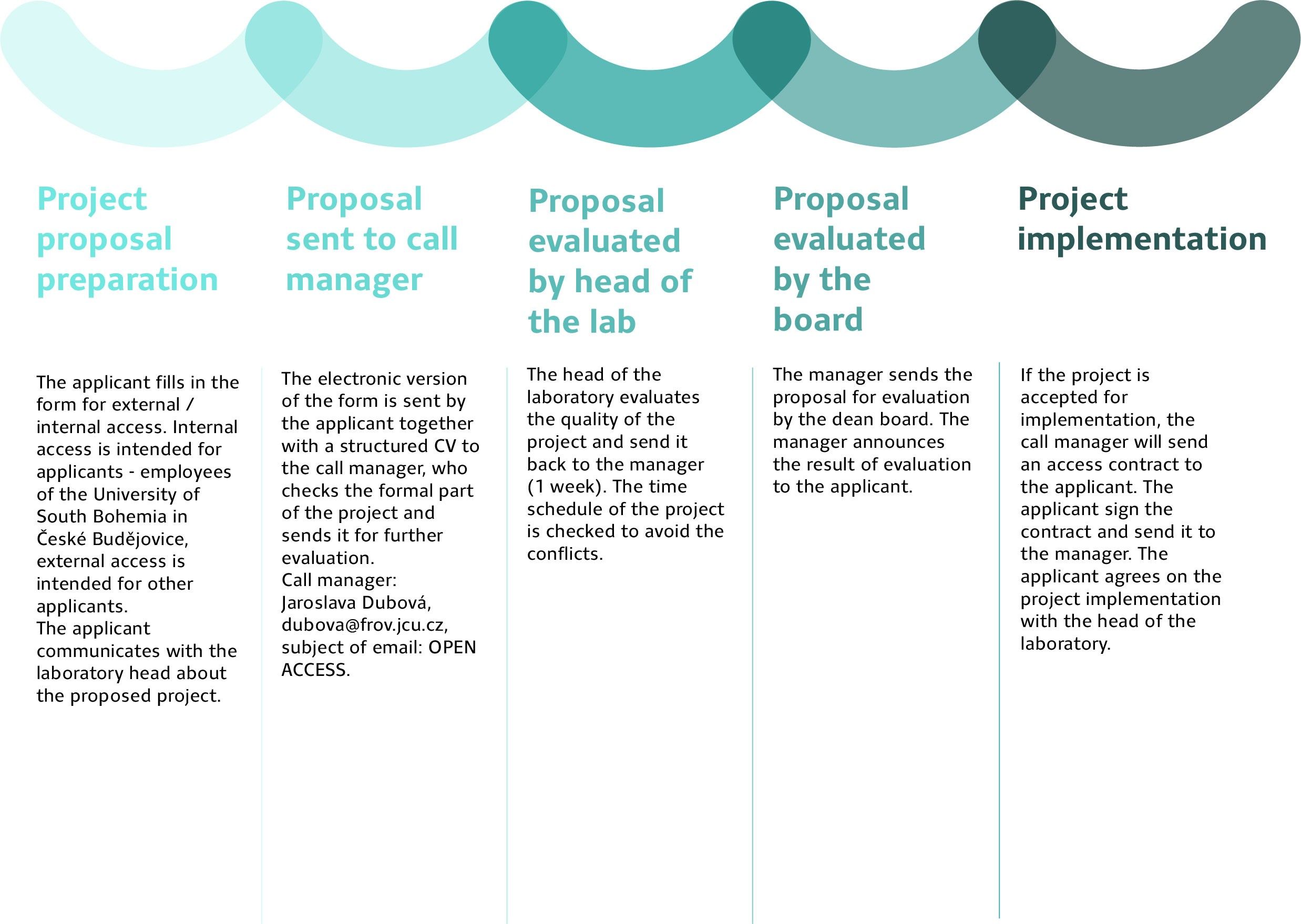
Performed projects

Selected open acces projects of LRI
Lead researcher: Prof. Riho Gross
Project period: 03.06.2019 / 21.06.2019
Laboratory: Laboratory of molecular, cellular and quantitative genetics
Project No: 2019-02-22
Project was focused on collection of tissues samples of wels catfish broodstock of strains established at the Genetic Fisheries Centre of FFPW USB and characterization of genetic variance within and between strains/families and for parentage assessment in families of their progeny using microsatellite genotyping and NGS. Following selection and qualitative assessment of reproductive performance, factorial mating of 6 females and 6 males per strain was used to establish full-sib and half-sib families. Following egg incubation and hatching, the fry was air freighted to Estonia for comparative evaluation of performance of the strains and families and to estimate heritability of commercially important traits.
Publications here: https://academic.oup.com/g3journal/article/10/11/3897/6048642
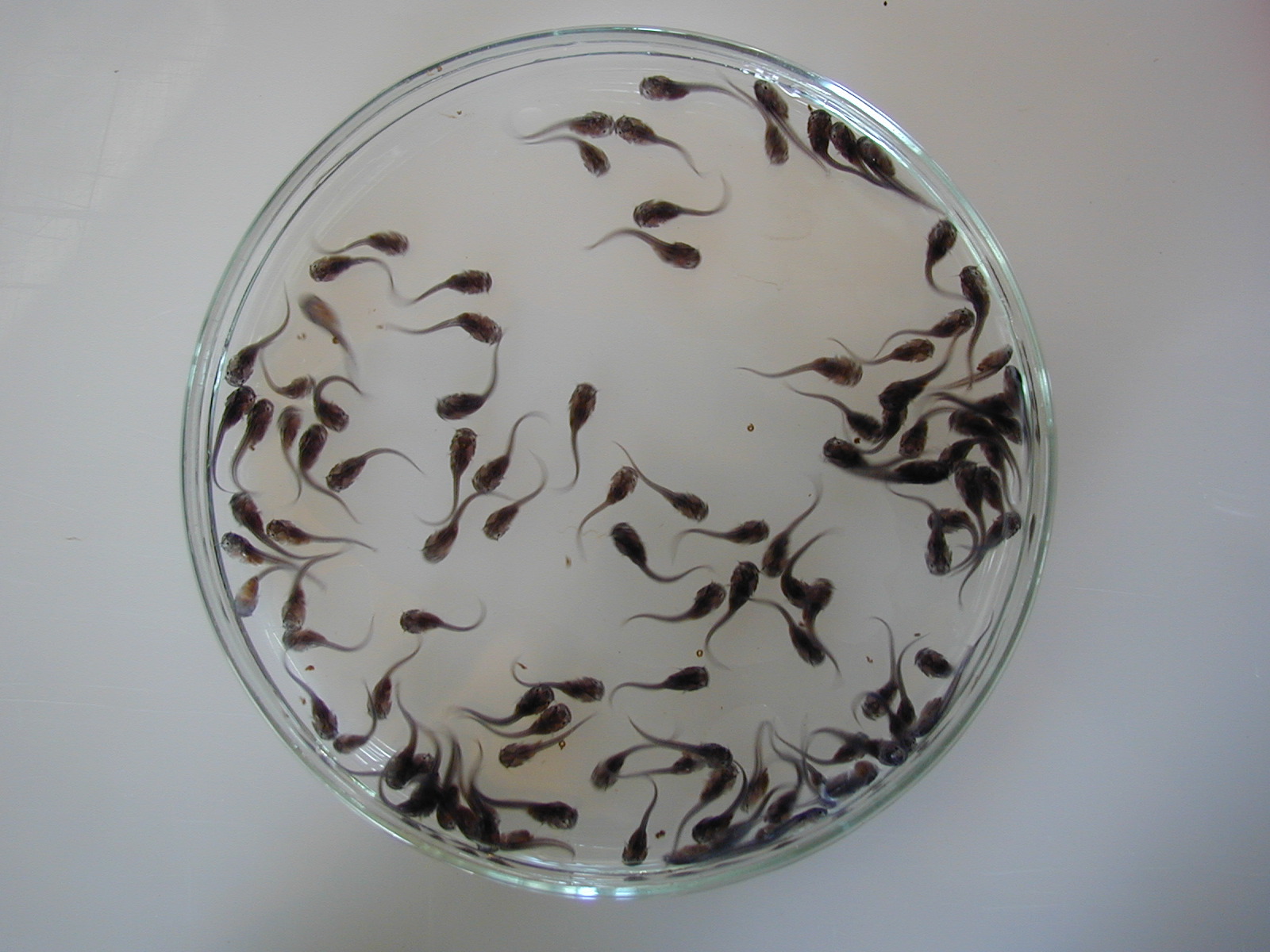
Lead researcher: Dr. Dipl.-Hyd. Jakob Schelker
Project period: 02.03.2020 / 24.03.2020
Laboratory: Laboratory of Environmental Chemistry and Biochemistry
Project No: 2020-01-63
Streams and rivers metabolize dissolved organic matter (DOM). Although most DOM compounds originate from natural sources, recreational use of rivers increasingly introduces chemically distinct anthropogenic DOM. The aim of this study was firstly to investigate anthropogenic effect on the increase of DOM in Traisen River in Austria during music festival, and secondly to examine fluorescence spectroscopy for monitoring DOM. Sunscreens and especially their component Phenylbenzimidazole sulfonic acid (PBSA) was found as the main source of anthropogenic pollution. This was confirmed not only by the fluorescence method but also by liquid chromatography coupled with mass spectrometry analysis of water samples in Laboratory of Environmental Chemistry and Biochemistry.
Publications here: https://pubs.acs.org/doi/full/10.1021/acs.est.0c02259
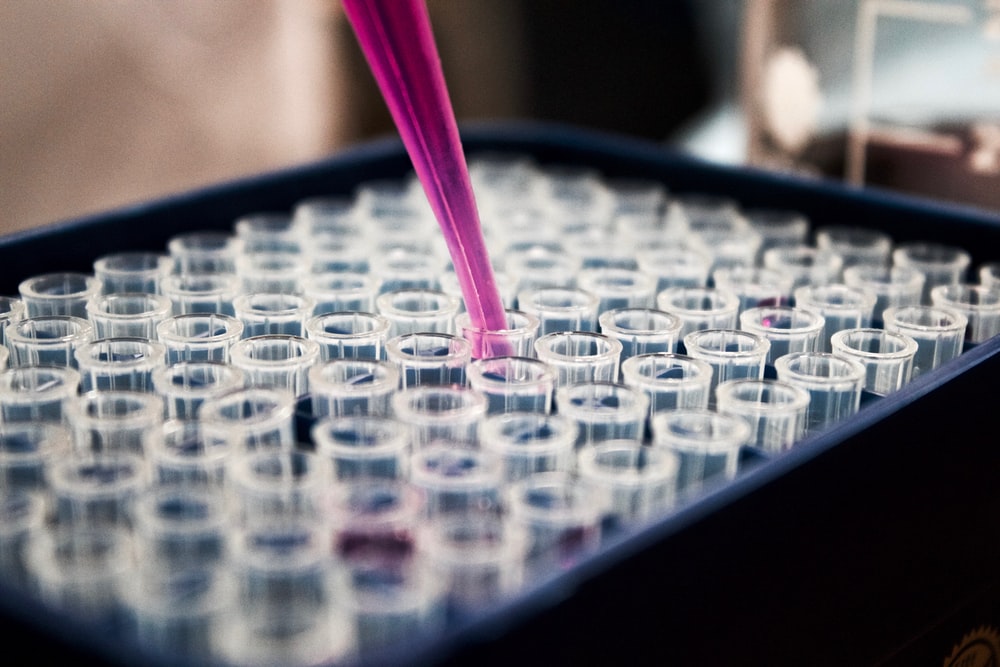
Lead researcher: Alexander Rebl, Ph.D.
Project period: 01. 08. 2020/ 31. 08. 2020
Laboratory: Laboratory of controlled reproduction and intensive fish culture
Project No: 2020-03-75
European perch, Perca fluviatilis, is a highly promising candidate for freshwater aquaculture diversification. It has great potential to deliver products of sensory quality and nutritional value according to the market demands in the EU. However, European perch production is often hampered by high sensitivity to stress under captive conditions which has a negative impact on reducing immune resistance and at the same time increasing sensitivity to diseases and pathogens. For the successful prevention of diseases, detailed information on the molecular mechanisms of immune responses among geographically distinct European perch populations against different pathogenic stimuli is requested. To overcome this obstacle, we established in vitro model of inflammation, using the stimulation of head kidney leukocytes with lipopolysaccharide (LPS), the major component of the outer membrane of Gram-negative bacteria. To this end, head kidney leukocytes (HKL) from four different European perch populations (France I and II, Denmark, Hungary) were isolated using density-gradient centrifugation and stimulated with LPS (100 µg/ml) for one hour. Following the incubation, the respiratory burst was measured using the dihydrorhodamine 123.
Publications here: https://www.researchgate.net/publication/346714561_DEVELOPMENT_OF_IN_VITRO_MODEL_FOR_STUDIES_OF_INFLAMMATORY_PATHWAY_IN_EUROPEAN_PERCH
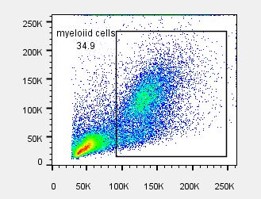
Lead researcher: Ing. Lucie Vištejnová, Ph.D.
Project period: 01.11.2019/ 31.12.2019
Laboratory: Laboratory of experimental complex systems
Project No: 2019-04-53
One of the key responses of cells on collagen-based materials is the mechanism of their adhesion on the material surface and their locomotion and proliferation on it. Therefore, the objective of this project is to evaluate the adhesion, spreading and locomotion of cells on collagen coming from different species and extracted by different methods. To extract information about cell structure and dynamics we had to develop respective software for which we developed new statistical methods for evaluation of physical parameters. We are, as first in the world, able to determine spectra of individual organelles, local diffusion, local directed flow inside the living mammalian cell and many other parameters.
Publications here: https://www.nature.com/articles/s41598-020-75441-7
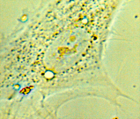
Lead researcher: Prof. Andreas Uhl
Project period: 23.11.2020/ 20.12.2020
Laboratory: Laboratory of signal and image processing
Project No: 2020-04-96
Precision fish farming is an emerging concept in aquaculture research and industry, which combines new technologies and data processing methods to enable data-based decision making in fish farming. The concept is based on the automated monitoring of fish, infrastructure and the environment, ideally by contactless methods. The identification of individual fish of the same species within the cultivated group is critical for individualized treatment, biomass estimation and fish state determination. The standard way of fish identification is invasive fih tagging. The project test the posibilities of long-term fish identifiaction based on the pictures of eye pattern. We sucessfully showed that the eye pattern can be used for the identification of individual fish and can be a non-ivansive substitute to the invasive fish tagging.
Publications here: https://ieeexplore.ieee.org/document/9133326
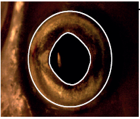
Lead researcher: MSc. Astrid Sibylle Holzer, Ph.D
Project period : 01.06.2019/ 02.08.2019
Laboratory: Laboratory of Intensive Aquaculture
Project No: 2019-01-12
The aim of the project was to examine the application of artificially produced rotifers of the species Brachionus plicatilis as the first exogenous nutrition in intensively reared pikeperch larvae (Sander lucioperca). The study of the project examined a probiotic based on Pediococcus acidilactici lactic acid bacteria in Bactocell Aqua 100 preparation. This product was tested in the form of incorporated bacteria into the body of the rotifers or enriched water with bacteria that was used for larval culture. In second study of the project, the effect of enriching produced rotifers with unsaturated fatty acids (PUFA - EPA and DHA) was tested using artificially cultured Chlorela algae or additives like Selco, Spresso preparation from INVE company from Belgium. The aim of both studies was to increase the survival rate and physiological resistance of cultured larvae to produce high-quality juveniles for further industrial farming.
Publications here: https://www.mdpi.com/2076-2607/8/2/238
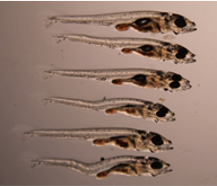
Implemented open access projects LRI
| 2022 | ||
| Project no |
Name of the project |
country of the solver |
|---|---|---|
| 2022-01-147 | Genotoxic effect of dietary on sturgeon | Poland |
| 2022-01-148 | Save the crucian carp | Czech Republic |
| 2022-01-149 | Identification of origin of two Coregonus specises in lakes Most and Medard | Czech Republic |
| 2022-01-150 | Anthropogenic impacts on the self-purification capacity of a river - Studies on possible causes and effects of altered river morphology on the removal of pharmaceuticals and their residues | Austria |
| 2022-01-151 | Bioanalytical and analytical assessment of the anti-progestagenic and anti-thyroid organic micropollutants in Czech aquatic environment | Czech Republic |
| 2022-01-152 | Effect of different light regime on survival, growth and culture efficiency in Northern pike larvae and juveniles under controlled conditions of intensive aquaculture | Ukraine |
| 2022-01-153 | Possibilities of intensive rearing of Danube salmon (Hucho hucho) in RAS | Slovakia |
| 2022-01-154 | Effect of different doses of astaxanthin supporting growth and colour production in red-white ornamental koi carp (Cyprinus carpio) in intensive aquaculture | Czech Republic |
| 2022-01-155 | The optimalization and utilization feeding frequency in pikeperch (Sander lucioperca) intensive aquaculture | Czech Republic |
| 2022-02-156 | Cryopreservation of trout sperm in containers of big volume | Czech Republic |
| 2022-02-157 | Bioactive and nutritionally important compounds profile of vegetables grown in soilless systems | Czech Republic |
| 2022-02-158 | Development of the marbled crayfish diet | Czech Republic |
| 2022-02-159 | Analysis of Czech wastewater samples for identification and quantification of illicit drugs | Czech Republic |
| 2022-02-160 | In vivo and in vitro aging of common carp Cyprinus carpio sperm after multiple hormonal application and stripping of males | Czech Republic |
| 2022-02-161 | Chemcatcher Screening - River Test and Itchen, UK | UK |
| 2022-02-162 | Analytical characterization of UV filters in Czech surface waters | Czech Republic |
| 2022-02-163 | Effect of dietary supplementation with dragon fruit (Hylocereus undatus) peel powder on growth performance, immunological response, and immune-antioxidant gene expression of Nile tilapia (Oreochromis niloticus) cultivated in a biofloc system | Thailand |
| 2022-02-164 | The role of K+ (Slo1-type) channels in rainbow trout spermatozoa motility | Czech Republic |
| 2022-03-165 | Foraging behaviour of marbled crayfish with a different limbs injuries | France |
| 2022-03-166 | Effect of different stocking density on growth performance of Siberian sturgeon (Acipenser baerii) and Russian sturgeon (Acipenser gueldenstaedtii) juveniles in recirculating aquaculture systems | Czech Republic |
| 2022-03-167 | Test of fish identification in infrared and visible spectra for sorting machine | USA |
| 2022-03-168 | The effect of Acorus calamus on algae growth | Czech Republic |
| 2022-03-169 | Hydroponics vs. Aquaponics: Growth of greenhouse crops in different soilless systems | Czech Republic |
| 2022-03-170 | Micropollutants in water and sediment | Czech Republic |
| 2022-03-171 | SOME INSIGHTS INTO FATTY ACID AND ENERGY METABOLISM OF A COLDWATER PERCH SPERM: NUTRITION & KINETICS | Czech Republic |
| 2022-03-172 | Elevated temperature promotes spermatozoa motility kinetics and fertilizing ability following short-term storage in common carp, Cyprinus carpio | Iran |
| 2022-03-173 | Dynamics of zooplankton and macrozoobentos community together with natural diet of common carp in fishponds | Poland |
| 2022-03-174 | Visual system in induced polyploid and hybrid sturgeons | Czech Republic |
| 2022-03-175 | Visual system of the starry sturgeon (Acipenser stellatus), a species without rod cells in retina | Czech Republic |
| 2022-03-176 | The impact of UV light on the morphological changes in mammalian cells. | Czech Republic |
| 2022-03-177 | Development of a method for instance segmentation of live cells | Albania |
| 2022-03-178 | The classification of the cell phases according to the spectral properties of the intracellular regions | Serbia |
| 2022-03-179 | Bioinformatic analysis of enzymes within central carbon metabolism of cyanobacteria | Albania |
| 2022-03-180 | Linkages between temperature, diel cycles, and metabolic rates in juvenile and adult Procambarus virginalis | USA |
| 2022-03-181 | Utilization of crayfish tissue cells for in vitro screaning of environemntal aquatic pollutants at celular levels | Czech Republic |
| 2022-04-182 | Circadian rhythm of marbled crayfish influnced by reproductive status | Czech Republic |
| 2022-04-183 | Image analysis of human bone-derived cell lines (MG-63, SaOs-2) on diverse titanium surfaces | Czech Republic |
| 2022-04-184 | Influence of cryopreservation and Percoll gradient separation on Acipenser ruthenus sperm quality | Czech Republic |
| 2022-04-185 | Analysis of DNA damage repair in non-model fish species | Czech Republic |
| 2022-04-186 | Development and validation of a simple and fast quantitative screening method for a broad spectrum of environmental pollutants | USA |
| 2022-04-187 | Can stress conditions extend the maternal care and juvenile development in parthenogenetic marbled crayfish | Czech Republic |
| 2022-04-188 | Respirometry and cardiac activity in crayfish | Czech Republic |
| 2022-04-189 | Stimulating the mucosal immunity of rainbow trout () in recirculating aquaculture systems to increase natural defense mechanisms | Czech Republic |
| 2022-04-190 | Image analysis of MSCs - T-cell interaction | Austria |
| 2022-04-191 | Annotation of videos of ornamental fish under controlled conditions and training the neural network | Czech Republic |
| 2021 | ||
| Project no |
Name of the project |
country of the solver |
|---|---|---|
| 2020-03-79 | Effect of elevated temeprature on trophic relationship of marbled crayfish in food webs of Hevíz lake and their chanels | Hungary |
| 2021-01-98 | Israel Chemcatcher Screening | UK |
| 2021-01-99 | Effects of dietary protein and soybean meals on growth perfromance, body composition, blood biochemistry in pikeperch (Sander lucioperca) | Ukraine |
| 2021-01-100 | Optimization of the intensive rearing of rainbow trout (Oncorhynchus mykiss in RAS) | Czech Republic |
| 2021-01-101 | Effect of sinking and floating feed in the rearing of European pike perch (Sander lucioperca) | Czech Republic |
| 2021-01-102 | Analysis of macroergic phosphates and metabolites in sterlet spermatozoon | Czech Republic |
| 2021-01-103 | Analysis of macroergic phosphates and organic acids in sperm of stingrays during storage | Czech Republic |
| 2021-01-104 | Occurrence of (anti-)progestagenic activities in Czech wastewaters and surface waters | Czech Republic |
| 2021-01-105 | Non-targeted screening and quantification of cortisol in stugeons´ plasma | Czech Republic |
| 2021-01-106 | Phenotype modifications and functional properties during fish sperm aging | Czech Republic |
| 2021-01-107 | Optimization of Sperm Management and Fertilization in Zebrafish [Danio rerio (Hamilton) | Czech Republic |
| 2021-01-108 | Effect of anti-progestagenic activities on Xenopus leavis | Germany |
| 2021-02-109 | Choosing the best diet for the aging fish model -turquoise killifish | Czech Republic |
| 2021-02-110 | The cognitive ability of fish during food intake in a new environment after restocking | Czech Republic |
| 2021-02-111 | Evaluation of different approaches for fish plasma sampling with respect to environmental risk assessment of pharmaceuticals | Sweden |
| 2021-02-112 | Stress response and DNA damage in mosaic sturgeon (Acipenser ruthenus) larvae | Czech Republic |
| 2021-02-113 | The effect of in-vitro oocyte ageing and highly concentrated sperm insemination on the incidence of spontaneous autopolyploidy and mosaicism in sterlet | Czech Republic |
| 2021-02-114 | Behaviour and fitness in cultured asp (Leuciscus aspius) | Czech Republic |
| 2021-02-115 | IN-VITRO CELL LINE CULTURE BEHAVIOUR AFTER IMPLICATION OF FULL-SPECTRUM CANNABIS SATIVA L. EXTRACTS. | Czech Republic |
| 2021-02-116 | Improvement of acoustic conditions for audio recordings of fish in standard rectangular glass aquariums | France |
| 2021-02-117 | Carp sperm short-term storage | Poland |
| 2021-02-118 | Living lymphocytes evaluation for diagnostic purposes, possibilities of replacement of manual observation at different optical magnifications by digital magnification and processing | Czech Republic |
| 2021-02-119 | Mesenchymal stem cells growth in constrained environment | Austria |
| 2021-02-120 | Analysis of energetic metabolites in carp spermatozoa during storage | Poland |
| 2021-02-121 | Investigating the specification of hair cells versus electroreceptors in the lateral line using CRISPR/Cas9 in sterlet | UK |
| 2021-02-122 | Quantification of selected antibiotic, other pharmaceuticals and pesticides in passive samplers exposed in lake Malawi, Africa | UK |
| 2021-03-123 | Fabrication, stability and rheological properties of zein/chitosan particles stabilized Pickering emulsions with antioxidant activities of the encapsulated vit-D3. | Czech Republic |
| 2021-03-124 | Investigation of the physiological mechanisms underpinning pharmaceutical-induced behavioural alterations | Sweden |
| 2021-03-125 | Influence of ploidy level of different Acipenseridae species on optimal spermatozoa concentration for cryopreservation | Czech Republic |
| 2021-03-126 | Effect of temperature on food sources are incorporation into fish body | Austria |
| 2021-03-127 | Burst swimming speed testing in Prussian carp (Carassius gibelio) | Czech Republic |
| 2021-03-128 | Triploidization in pikeperch (Sander lucioperca) induced by cold shock | Czech Republic |
| 2021-03-129 | Motility of diplonemids | Czech Republic |
| 2021-03-130 | Immune response of porcelain disease infected crayfish | Croatia |
| 2021-04-131 | Ploidy level analysis in collected samples of the genus Carassius | Czech Republic |
| 2021-04-132 | Vizualization of acrosome reaction in sturgeon spermatozoa | Poland |
| 2021-04-133 | Pickering emulsion stabilized Andrographolide: A bioactive diet supplimenting growth, digestibility, immunity and viral resistance in Cyprinus carpio. | Czech Republic |
| 2021-04-134 | Effect of four different feed formulations on the growth and digestibility of African catfish (Clarias gariepinus) juveniles | Czech Republic |
| 2021-04-135 | Fish Mass Estimation in RAS using 3D Camera | Czech Republic |
| 2021-04-136 | Fish individual identification under real conditions | Austria |
| 2021-04-137 | Intermitent respirometry in three cichlids species under normoxic and hypoxic conditions | Czech Republic |
| 2021-04-138 | Factors affecting the prey-predator interactions | Czech Republic |
| 2021-04-139 | The nerve regeneration in crayfish | Czech Republic |
| 2021-04-140 | Optimization of mutagenesis by CRISPR/Cas9 in sturgeon | USA |
| 2021-04-141 | Verification of sex genomic markers in Siberian sturgeon (Acipenser baerii) | Poland |
| 2021-04-142 | Evaluation of new industrial schooling aquarium | Czech Republic |
| 2021-04-143 | Pike pearch meat analysis using multispectral camera | Czech Republic |
| 2021-04-144 | Comparison of performance of new NanoTruth optical microsope with Scanning electron microscope | Czech Republic |
| 2021-04-145 | Development and testing of basic controls of performance of new NanoTruth optical microscope | Czech Republic |
| 2021-04-146 | Intermitent respirometry in three cichlids species under normoxic and hypoxic conditions/2 | Czech Republic |
| 2020 | ||
| Project no |
Name of the project |
country of the solver |
|---|---|---|
| 2020-01-55 | Use of humic substances in nutrition of Oncorhynchus mykiss juveniles | Germany |
| 2020-01-56 | Effects of dietary protein and lipid levels on growth perfromance, body composition, blood biochemistry and ammonia excretion in European grayling (Thymallus thymallus) | China |
| 2020-01-57 | Combined supplementation of vitamin C and E for attenuating the oxidative damages induced by oxidized fish oil in rainbow trout (Oncorhynchus mykiss) | Czech Republic |
| 2020-01-58 | Family assignment of broodstock fish of common carp to eliminate inbreeding | Czech Republic |
| 2020-01-59 | Effect of thermal aclimation on functional response parameters of marbled crayfish (Procambarus virginalis) | France |
| 2020-01-60 | Predation induces anxiety-like behaviour in crayfish is blocked by pollutants disrupting serotonin pathway | UK |
| 2020-01-61 | The effect of water oxygen saturation on the performance of pikeperch (Sander lucioperca) in intensive farming | Norway |
| 2020-01-62 | Antimicrobial peptides in fish seminal plasma and evaluation of their commercial application | Malta |
| 2020-01-63 | PBS analysis in water samples | Austria |
| 2020-02-64 | HPLC-MS/MS analysis of pharmaceuticlas and drugs in water samples | Slovakia |
| 2020-02-65 | PBS analysis in water samples | Slovakia |
| 2020-02-66 | Study of shark and skate sperm motility | Spain |
| 2020-02-67 | Effect of cryopreservation on lipid composition of sterlet (Acipenser ruthenus) sperm | Czech Republic |
| 2020-02-68 | Parentage analysis in sterlet | Czech Republic |
| 2020-02-69 | Ploidy level analysis in collected samples of the genus Carassius | Czech Republic |
| 2020-02-70 | The effect of oocyte over-ripening on the ocurrence of spontaneous polyploidy in sterlet. | Czech Republic |
| 2020-03-71 | Cardiotoxicity of selected pharmaceuticals to early development of nontarget aquatic organisms | Croatia |
| 2020-03-72 | Use of hormonal preparations in artificial spawning of barbel (Barbu Barbus) | Czech Republic |
| 2020-03-73 | Does methamphetamine in environmetally relevant concentration affecting ethophysiological parameters of crayfish during early embrional and postembryonal stages | Czech Republic |
| 2020-03-74 | The cognitive ability of fish during food intake in a new environment after restocking | Czech Republic |
| 2020-03-75 | Population-specific immune response in percid species | Germany |
| 2020-03-76 | Determination of Key Parameters in Fish School Behaviour | Czech Republic |
| 2020-03-77 | Carbon quantum dots for fluorescence labeling of cells | Czech Republic |
| 2020-03-78 | Measurement of intracellular dynamics after exposition of pesticide | Czech Republic |
| 2020-03-80 | Fractionlization of stable isotopes in crayfish body | Italy |
| 2020-03-81 | The role of predator chemical cues in foraging efficiency and intestinal evacuation of the invasive round goby (Neogobius melanostomus) | Czech Republic |
| 2020-03-82 | Estimation of stocking efficiency of the sterlet juveniles in the Slovakian part of the Danube River | Slovakia |
| 2020-03-83 | Visible Aquaphotomics on Mineral Water Concentration | Hungary |
| 2020-03-84 | Bacterial community species specificity and dynamics during storage of fish– microbiological and MALDI TOF approach | Czech Republic |
| 2020-03-85 | Use of lupine as supplemental feed in carp pond aquaculture | Germany |
| 2020-03-86 | Population-specific stress response in Eurasian perch (Perca fluviatilis) | Czech Republic |
| 2020-03-87 | Quantification of selected pharmaceuticals and illicit drugs in extracts from spiders | Sweden |
| 2020-03-88 | Effect of feed formulation on the diet digestibility and physica properties of feces | Czech Republic |
| 2020-04-89 | Description of Cobitis hybrid gametogenesis | Czech Republic |
| 2020-04-90 | Analysis of DNA damage repair in non-model fish species | Czech Republic |
| 2020-04-91 | AVT correlations with the reproductive condition in male trout | Spain |
| 2020-04-92 | Application of nanoparticles for stimulation of spermiation in sterlet | Czech Republic |
| 2020-04-93 | Hydrogels in cell cultures | Czech Republic |
| 2020-04-94 | Vyhodnocení pokročilé analýzy vzorků vodního prostředí odebraných v souvislosti s rozsáhlou havarijní situací na řece Bečvě za účelem objasnění příčin havárie | Czech Republic |
| 2020-04-95 | Fish in RAS biomass estimation using new OAK-D camera | Czech Republic |
| 2020-04-96 | Sea bass identification - non-invasive approach | Austria |
| 2020-04-97 | Research of herd behaviour of fish in relation to main water contaminants and study of herd behaviour changes ant its aplication for drinking water treatment aparatus. | Czech Republic |
| 2019 | ||
| Project NO | Name of the project | country of the solver |
|---|---|---|
| 2019-01-01 | Analysis of samples from a chronic toxicity test on common carp with synthetic progestins | Czech Republic |
| 2019-01-02 | Development of the software for cell migration determinaton | Czech Republic |
| 2019-01-03 | Využití recirkulačních systémů při odchovu parmy obecné (Barbus barbus) za účelem zkrácení odchovného cyklu | Czech Republic |
| 2019-01-04 | Polarographic assessment of burbot sperm respiration | Czech Republic |
| 2019-01-05 | Analysis of RNA localization in vitelogenic zebrafish oocytes | Czech Republic |
| 2019-01-06 | Experimental estimation of gut evacuation rates of invasive alien fish and amphipods | Germany |
| 2019-01-07 | Evaluation of cardiac activity and histopathological changes of invasive crayfish under hypoxic conditons | Czech Republic |
| 2019-01-08 | Fish sampling in recirculating aquaculture system (RAS) | Czech Republic |
| 2019-01-09 | Optimize of the use euryhaline rotifer Brachionus plicatilis for pikeperch Sander lucioperca (L.) larvae first feeding | Czech Republic |
| 2019-01-10 | Effects of the sub-optimal water temperatures on the feeding activity of pikeperch (Sander lucioperca) with regards to predator’s sex and size of the prey. | Hungary |
| 2019-01-11 | The effect of interspecific competition on the feeding activity of pikeperch (Sander lucioperca) and prey size preference. | Czech Republic |
| 2019-01-12 | Use of probiotics for Pikeperch mass production | Czech Republic |
| 2019-01-13 | Analýza ploidie a obsahu DNA u potomstva experimentálních populací jeseterů | Czech Republic |
| 2019-02-14 | Estimation of the success of gynogenesis by using microsatellite genotyping | Czech Republic |
| 2019-02-15 | Ploidy analysis of pikeperch larvae | Hungary |
| 2019-02-16 | Behaviour study of sexless Danio | Czech Republic |
| 2019-02-17 | Passive sampler permformance evaluation | Czech Republic |
| 2019-02-18 | Motility of diplonemids and trypanosomatids | Czech Republic |
| 2019-02-19 | Analysis of grab water samples from the catchment of the river Odra | Czech Republic |
| 2019-02-20 | Regeneration of pleopods | Italy |
| 2019-02-21 | Postembryonic development of the freshwater crayfish Austropotamobius torrentium, Cherax destructor and Procambarus virginalis | Czech Republic |
| 2019-02-22 | Comparative performance experiment of Silurus glanis strains and families | Estonia |
| 2019-02-23 | Multiresidual HPLC-MS/MS and in-line SPE-HPLC-MS/MS analysis of drugs, pharmaceuticals and their metabolites in complex environmental samples (waste waters and sludges) | Slovakia |
| 2019-02-24 | Quatification of selected pharmaceuticals in waste water before and after BDD treatment and method development for identification and semi-quantification of degradation/transformation products after BDD treatment | Czech Republic |
| 2019-02-25 | Study of pikeperch sperm motility parameters in groups of males with different hormonal stimulation | Czech Republic |
| 2019-03-26 | Nutrient and digestaility of seven insect meals used in aquaculture | Czech Republic |
| 2019-03-27 | Passive sampler permformance evaluation | Czech Republic |
| 2019-03-28 | Evaluation of antiparasitic drugs content in selected fish tissues after treatment | Czech Republic |
| 2019-03-29 | Development of aquaponic feed - part 1 digestibility | Germany |
| 2019-03-30 | Development of aquaponic feed - part 2 effect on plant performance | Germany |
| 2019-03-31 | Screening for hot spots of discharging hormonal activities into surface waters and identification of the effect drivers | UK |
| 2019-03-32 | Quatification of selected pharmaceuticals in selected tissues from common carp | Czech Republic |
| 2019-03-33 | Quatification of selected pharmaceuticals and illicit drugs in water samples from pond affected by treated waste water | Czech Republic |
| 2019-03-34 | The application of immunohistochemical markers on chondrostean and the teleostean tissues | Switzerland |
| 2019-03-35 | Hyperspectral imaging and Deep learning algorithms for fillet quality assessment of rainbow trout fed insect proteins | Italy |
| 2019-03-36 | Influence of sperm concentration during freezing on post-thaw outcomes in carp | Brazil |
| 2019-03-37 | The effect of quinidine on trout sperm motility | Czech Republic |
| 2019-03-38 | Evaluation of impact Topmouth gudgeon (Pseudorasbora parva) on zooplankton | Czech Republic |
| 2019-03-39 | Parentage assigment of common carp backup stock for selection experiment | Czech Republic |
| 2019-03-40 | Quantificaiton of antibiotics from UK rivers | Czech Republic |
| 2019-04-41 | Diurnal activity in round goby (Neogobius melanostomus) and European bullhead (Cottus gobio) | Germany |
| 2019-04-42 | Behavioural interactions of invasive round goby (Neogobius melanostomus) and European bullhead (Cottus gobio) | Germany |
| 2019-04-43 | Invasive crayfish resistance to anoxia evaluated by survival duration and cardiac activity | Romania |
| 2019-04-44 | The effects garlic (Allium sativum) powder on growth, digestibility, body composition, immunity factors and stress tolerance in perch (Perca fluviatilis) | Czech Republic |
| 2019-04-45 | Characterization of proteome profile of carp (Cyprinus carpio L) semen during refrigerator storage | Czech Republic |
| 2019-04-46 | Psychoactive compounds at environmental concentration alter burrowing behavior in the freshwater crayfish | Czech Republic |
| 2019-04-47 | Biocompatible electrospun nanofibrous supports for deposition of living cells | Czech Republic |
| 2019-04-48 | Behaviour and fitness in cultured Eurasian perch (Perca fluviatilis) - effect of orgin and domestication | Poland |
| 2019-04-49 | Response of Desmodesmus quadricaudato selected potentially allelopathic componds | Czech Republic |
| 2019-04-50 | Dynamic interactions of living cells with the surface of materials | Czech Republic |
| 2019-04-51 | Collection of datasets for fish identification in 3D | Czech Republic |
| 2019-04-52 | RNA localization in fish embryos | Czech Republic |
| 2019-04-53 | Collagen from various mammal species as matrix for tissue engineering | Czech Republic |
| 2019-04-54 | Fish skin hyperspektral imagery for diests distinqushing | Czech Republic |

